#from reading for my canadian indigenous literatures class
Text


damn
#dark academia#da#academia#literature#art#text#quote#from reading for my canadian indigenous literatures class#when your compulsory reading sends you into an existential crisis#love to see it#meaning of life#existential dread#I have to have something playing at all times otherwise I can feel myself slipping#my brain is a menace#on silence#and needing to fill it up
9 notes
·
View notes
Text
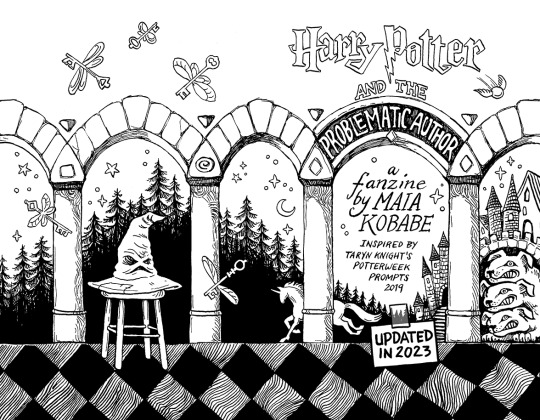
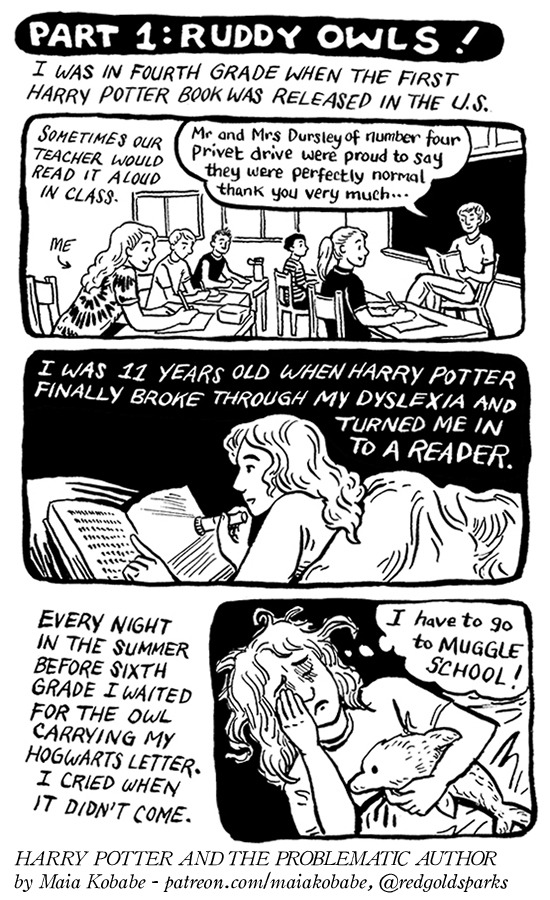


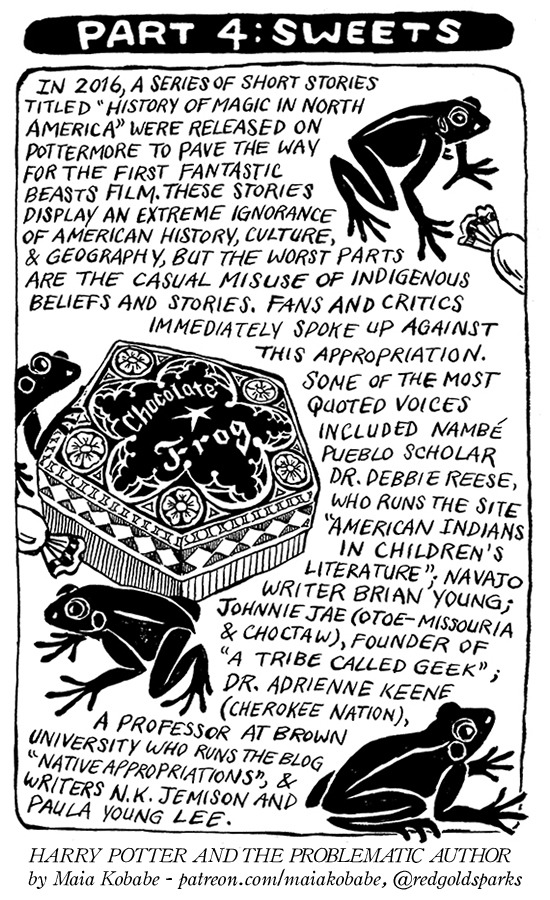


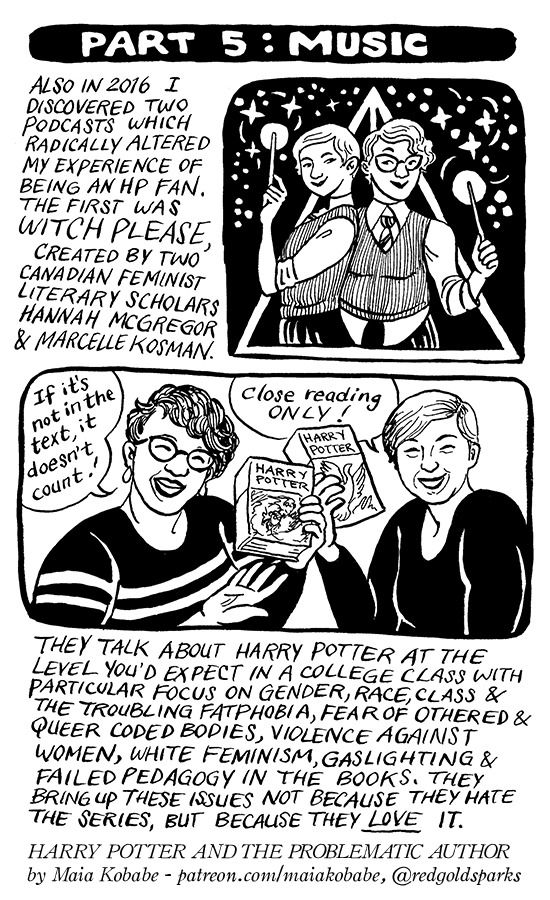

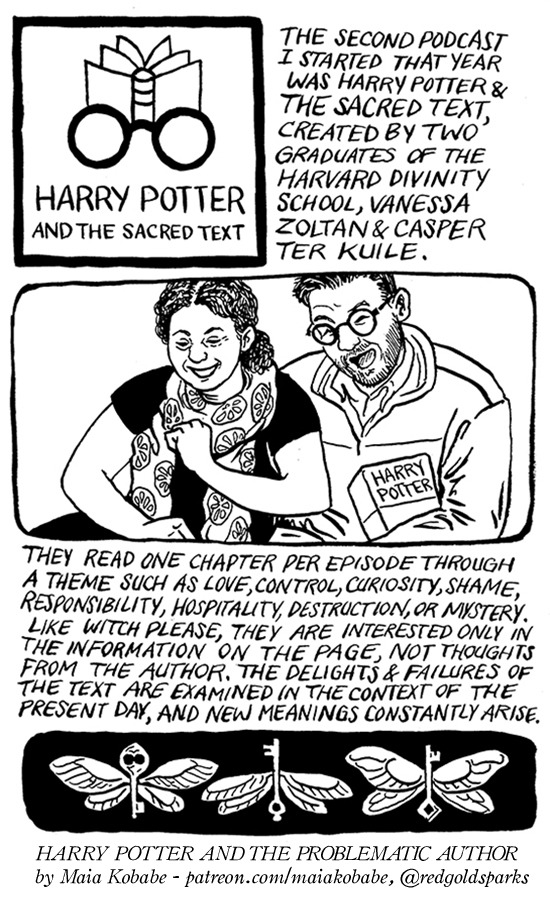
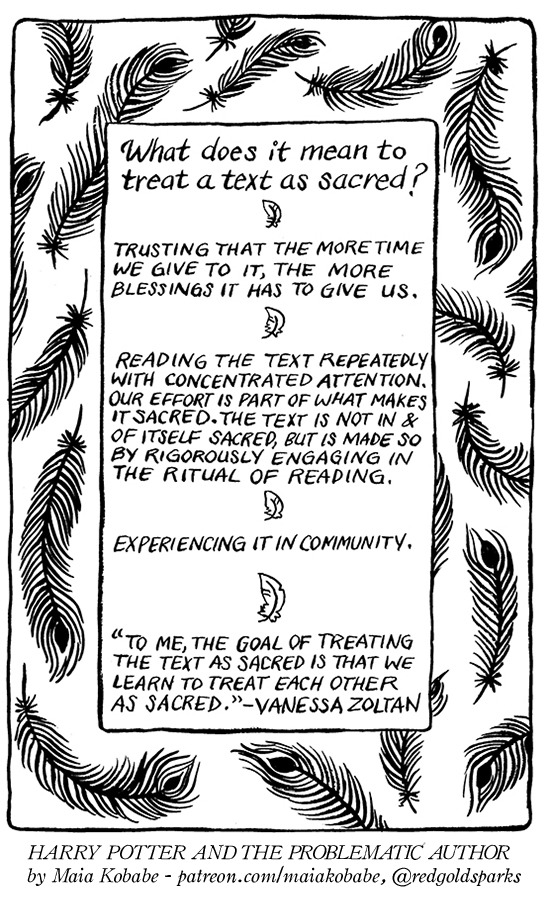


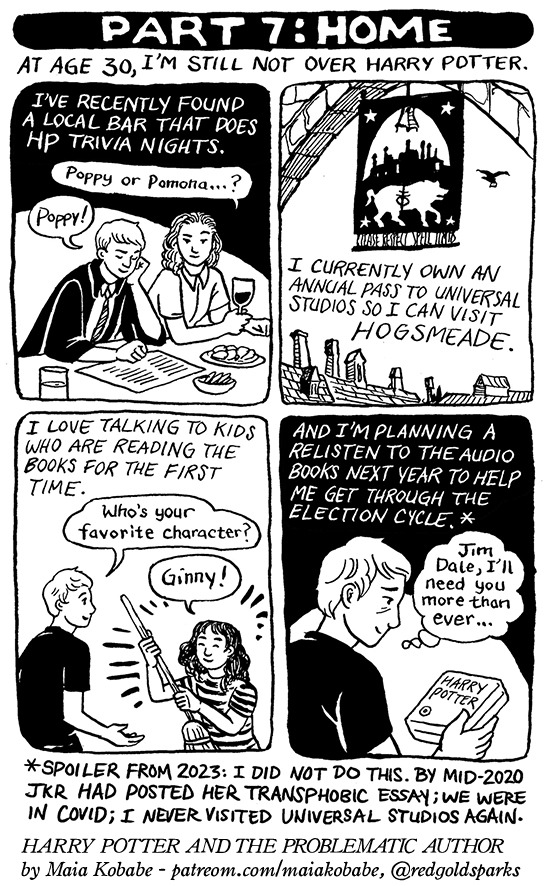

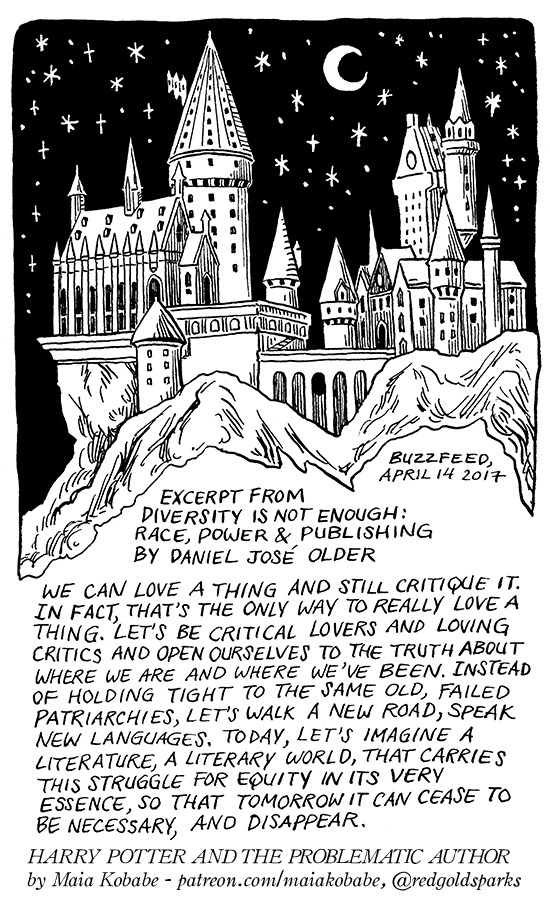
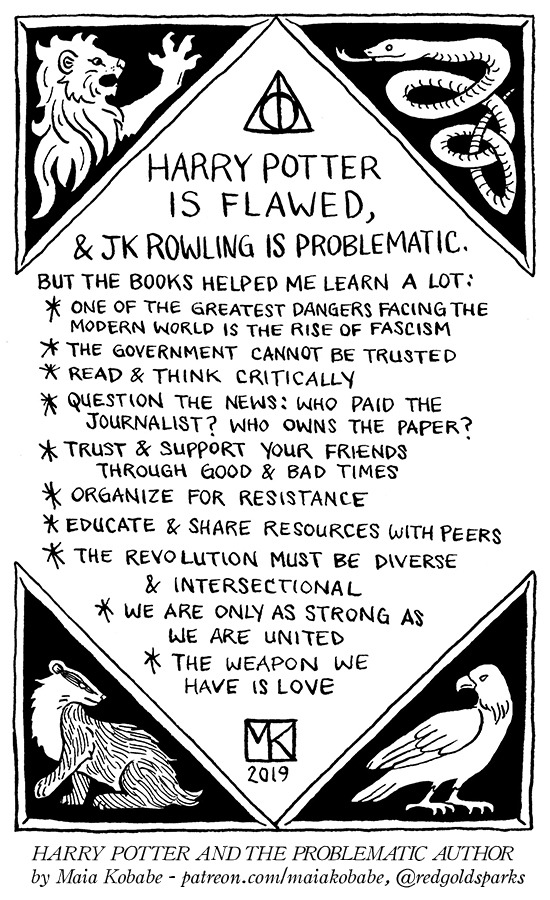

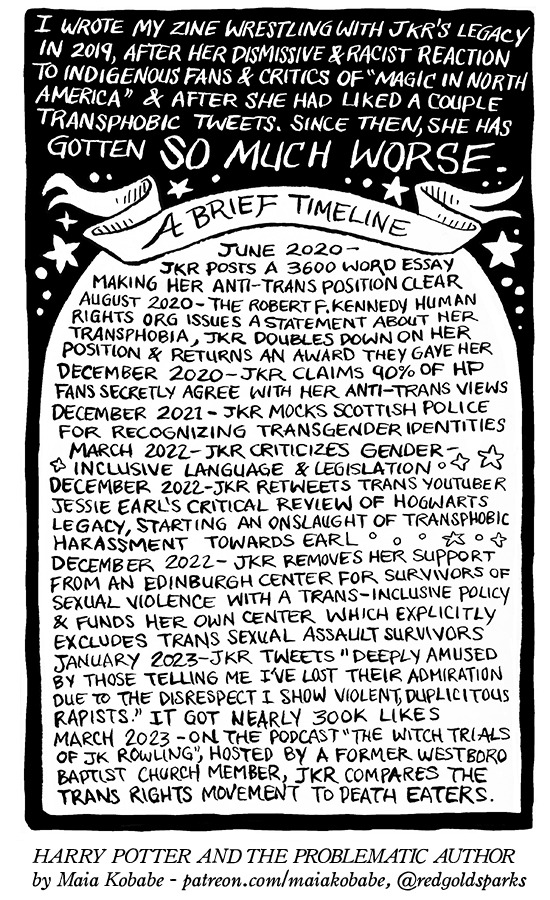


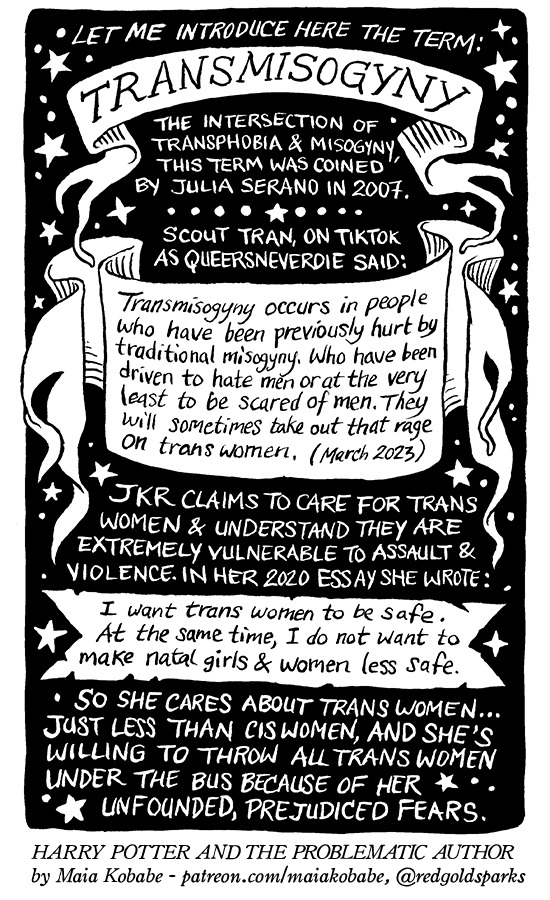
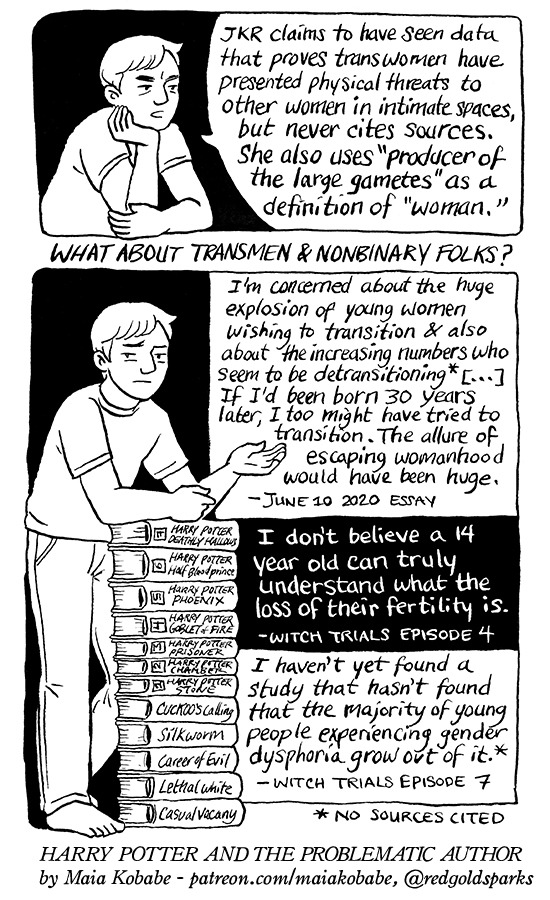



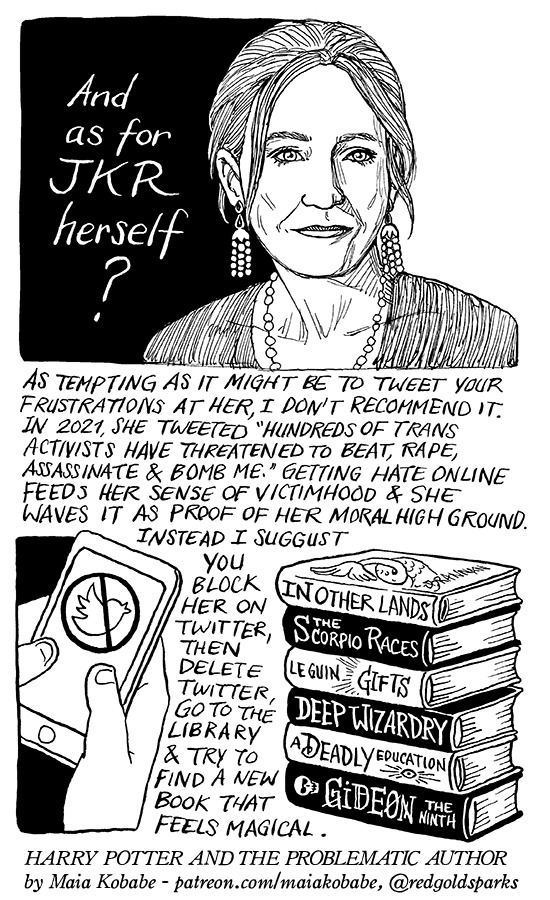
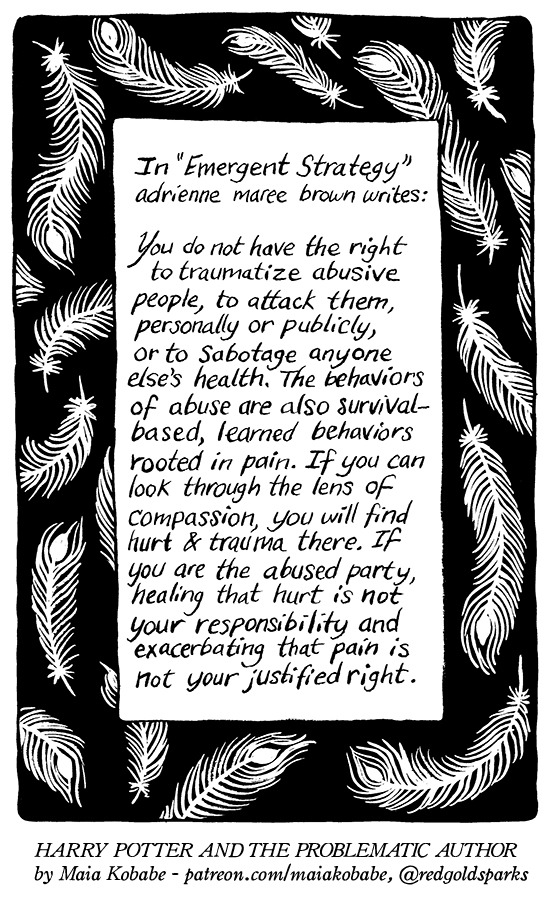
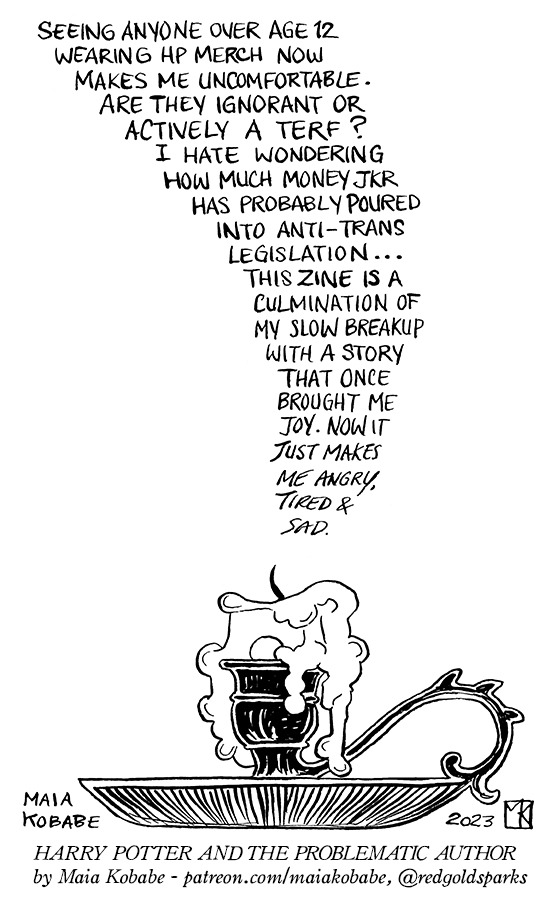
I wrote a 12 page epilogue to my 2019 comic "Harry Potter and The Problematic Author" because I found, in 2023, that I had more to say. You can also find this comic on my website, and I have PDF copies available on etsy. I may sell print copies at some point in the future.
instagram / patreon / portfolio / etsy / my book / redbubble
Full transcript below the cut.
PAGE 1
Part one: Ruddy Owls!
I was in fourth grade when the first Harry Potter Book was released in the US.
Panel 1: Sometimes our teacher would read it aloud in class. “Mr and Mrs Dursley of number 4 Privat Drive were proud to say they were perfectly normal, thank you very much…”
Panel 2: I was 11 years old when Harry Potter finally broke through my dyslexia and turned me into a reader.
Panel 3: Every night in the summer before sixth grade I waited for the owl carrying my Hogwarts Letter. I cried when it didn’t come. “I have to go to Muggle school!”
PAGE 2
Part Two: Hats
I dedicated myself to being a fan.
Panel 1: I began collecting Harry Potter News article.
Panel 2: I asked my relatives to mail me ones from their local papers. I filled a thick binder with clippings.
Panel 3: I wrote my own trivia quiz
Panel 4: and participated in the one held annually at the county fair. “Next contestant!”
Panel 5: I usually got into one of. the top five spots. I won boxes of candy, posters, stationary, and once a baseball cap. (Hat reads: I survived the battle of Hogwarts).
Panel 6: In high school I sewed a black velvet cape and knitted many stripped scarves.
PAGE 3
Part Three: Double Trouble
Watching the last film in 2011 felt like the final note of my childhood.
Panel 1: I remember driving home from the midnight showing thinking about the end of 13 years of waiting; wondering what would define the next chapter of my life.
Panel 2: That same month I heard of something called Pottermore. “Okay, so there’s a sorting quiz… I already know my house! Patronus assignment? Mine’s a barn owl. Duh!"
Panel 3: You can read the books again but with GIFs? Why?
Panel 4: I lived in a place with very slow and limited internet at the time. Pottermore sounded inaccessible, but also boring. I never joined.
Panel 5: "I’ll just read the actual books again, thanks."
PAGE 4
Part Four: Sweets
In 2016, a series of short stories titled "History of Magic in North America” were released on Pottermore to pave the way for the first Fantastic Beasts Film. These stories display an extreme ignorance of American history, culture, and geography, but the worst parts are the casual misuse of indigenous beliefs and stories. Fans and critics immediately spoke up against this appropriation. Some of the most quoted voices included Nambe Pueblo scholar Dr. Debbie Reese who runs the site “American Indians In Children’s Literature”; Navajo writer Brian Young; Johnnie Jae (Otoe-Missouria and Choctaw), founder of A Tribe Called Geek; Dr Adrienne Keene (Cherokee Nation), a Professor at Brown University who runs the blog “Native Appropriations”, and writers N.K. Jemison and Paula Young Lee.
PAGE 5
Rowling is famous for responding to fans directly on twitter, yet she did not respond to anyone calling out the damaging aspects of “Magic in North America.” Her representatives refused to comment for March 9 2016 article in the Guardian. She has never apologized. All of this, plus the casting of Johnny Depp and the specific declarations of support by JKR, Warner Brothers, and director David Yates left a sour taste in my mouth.
For further thoughts on the new films read The Crimes of Grindelwald is a Mess by Alanna Bennett for Buzzfeed News, November 16, 2018.
PAGE 6
Excerpt from Colonialism in Wizarding American: JK Rowling’s History of Magic in North America Through an Indigenous Lens by Allison Mills, MFA, MAS/MLIS (Cree and Settler French Canadian)
Although Rowling is certainly not the first white author to misstep in her treatment of Indigenous cultures, she has an unprecedented level of visibility and fame, […] One of the most glaring problems with Rowling’s story is her treatment of the many Indigenous nations in North America as one monolithic group. […It] flattens out the diversity of languages, belief systems, and cultures that exist in Indigenous communities, allowing stereotyping to persist. […] It continues a long history of colonial texts which ignore that Indigenous peoples still exist. […] In the Wizarding world, as in the real world, Indigenous histories have been over-written and our cultures erased.
from The Looking Glass: New Perspectives in Children’s Literature Volumn 19, Issue 1
PAGE 7
Part 5: Music
Panel 1: Also in 2016 I discovered two podcasts which radically altered my experience of being an HP fan. The first was Witch Please created by two Canadian feminist literary scholars Hannah McGregor and Marcelle Kosman.
Panel 2: “If it’s not in the text it doesn’t count!” “Close reading ONLY!”
Panel 3: They talk about Harry Potter at the level you’d expect in a college class with particular focus on gender, race, class, and the troubling fatphobia, fear of othered and queer coded bodies, violence against women, white feminism, gaslighting and failed pedagogy in the books. They bring up these issues not because they hate the series, but because they LOVE it.
PAGE 8
These passionate, joyful conversations went off like fireworks in my mind. I had never taken a feminist class before. I gained a whole new vocabulary to talk about the books- and the world.
PAGE 9
Panel 1: The second podcast I started that year was Harry Potter and the Sacred Text, created by two graduates of the Harvard Divinity School, Vanessa Zoltan and Casper Ter Kuile.
Panel 2: They read one chapter per episode through a theme such as love, control, curiosity, shame, responsibility, hospitality, destruction, or mystery. Like Witch Please, they are interested only in the information on the page, not thoughts from the author. The delights and failures of the text are examined in the context of the present day, and new meanings constantly arise.
PAGE 10
What does it mean to treat a text as sacred?
Trusting that the more time we give to it, the more blessings it has to give us.
Reading the text repeatedly with concentrated attention. Our effort is part of what makes it sacred. The text is not in and of itself sacred, but is made so by rigorously engaging in the ritual of reading.
Experiencing it in community.
“To me, the goal of treating the text as sacred is that we learn to treat each other as sacred.” -Vanessa Zoltan
PAGE 11
Part 6: Tooth and Claw
In October 2017, Rowling liked a tweet linking to an article arguing that trans women should be kept out of women’s bathrooms because of cisgender women’s fears. In March 2018, she liked a tweet about the problem of misogyny in the UK Labour Party which included the line “Men in dresses get brosocialist solidarity I never had.” The author of the tweet had previously posted many blatantly anti-trans statements.
Rowlings publicist claimed she had liked the posted by accident in a “clumsy and middle-aged moment.” Yet, in September 2018 she liked a link posted by Janice Turner to her column in the Times UK titled “Trans Rapists Are A Danger In Women’s Jails.”
Screencaps of these tweets can be found in the article “The Mysterious Case of JK Rowling and her Transphobic Twitter History”, January 10 2019 by Gwendolyn Smith (a trans journalist), LGBTQNation.com
PAGE 12
Excerpt from: Is JK Rowling Transphobic? A Trans Woman Investigates by Katelyn Burns
Ultimately, the answer is yes, she is transphobic […] I think it’s fair that she receives criticism from trans people, especially given her advocacy on behalf of queer people in general, but also because she has a huge platform. Many people look up to her for creating a singular piece of popular culture that holds deep meaning for fans from different walks of life, and she has a responsibility to handle that platform wisely. (Published on them.us March 28, 2018)
PAGE 13
Part 7: Home
At age 30, I’m still not over Harry Potter.
Panel 1: I’ve recently found a local bar that does HP trivia nights. “Poppy or Pomona?” “Poppy!”
Panel 2: I currently own an annual pass to Universal Studios so I can visit Hogsmeade.
Panel 3: I love talking to kids who are reading the books for the first time. “Who’s your favorite character?” “Ginny!”
Panel 4: And I’m planning a relisten to the audio books to next year to help me get through the election cycle. “Jim Dale, I’m going to need you more than ever…”
Spoiler from 2023: I did not do this. By mid-2020 JKR had posted her transphobic essay; we were in covid; I never visited Universal Studios again.
PAGE 14
But I do want to learn from her mistakes. I never want to repeat “Magic in North America.” As I write, I will do my research. I will consult experts and compensate them. If a reader from a different culture/background than me speaks up about my work, I will listen and apologize. I KNOW I WILL MAKE MISTAKES. But I will own up to them and I will do better.
PAGE 15
Excerpt from Diversity Is Not Enough: Race, Power and Publishing by Daniel José Older
We can love a thing and still critique it. In fact, that’s the only way to really love a thing. Let’s be critical lovers and loving critics and open ourselves to the truth about where we are and where we’ve been. Instead of holding tight to the same old, failed patriarchies, let’s walk a new road, speak new languages. Today, let’s imagine a literature, a literary world, that carries this struggle for equity in its very essence, so that tomorrow it can cease to be necessary, and disappear. (Buzzfeed, April 14, 2017)
PAGE 16
Harry Potter is flawed, & JK Rowling is problematic. But the books helped me learn a lot:
*One of the greatest dangers facing the modern world is the rise of fascism
*The government cannot be trusted
*Read and think critically
*Question the news: who paid the journalist? Who owns the paper?
*Trust and support your friends through good times and bad
*Organize for resistance
*Educate and share resources with peers
*The revolution must be diverse and intersectional
* We are only as strong as we are united
*The weapon we have is love
MK 2019
PAGE 17
PART 8: EPILOGUE
In 2021 I removed a Harry Potter patch I sewed to my book bag over a decade ago. I took 15 pieces of Harry Potter fanart off my walls. I got rid of my paperback book set, 2 board games, and 8 t-shirt. [images: a Hogwarts a patch with loose threads, a pair of scissors and a seam ripper]
Panel 1: Maia holding up a shirt with the Deathly Hallows logo on it. Maia thinks: “Damn, this really used to be my entire personality.”
Panel 2: The t-shirt gets thrown into the Goodwill box.
PAGE 18
I wrote my zine wrestling with JKR’s legacy in 2019, after her dismissive and racist reaction to indigenous fans and critics of “Magic in North America” and after she had liked a couple transphobic tweets. Since then, she has gotten so much worse.
A Brief Timeline (mostly from this Vox article)
June 2020- JKR posts a 3600 word essay making her anti-trans position clear
August 2020- The Robert F Kennedy Human Rights Org issues a statement about her transphobia, JKR doubles down on her position and returns an award they gave her
December 2020- JKR claims 90% of HP fans secretly agree with her anti-trans views
December 2021- JKR mocks Scottish Police for recognizing transgender identities
March 2022- JKR criticizes gender-inclusive language and legislation
December 2022- JKR retweets trans youtuber Jessie Earl’s critical review of Hogwarts Legacy, starting an onslaught of transphobic harassment towards Earl
December 2022- JKR removes her support from an Edinburgh center for survivors of sexual violence with a trans-inclusive policy and funds her own center which explicitly excludes trans sexual assault survivors
January 2023- JKR tweets “Deeply amused by those telling me I’ve lost their admiration due to disrespect I show violent, duplicitous rapists.” It got nearly 300K likes
March 2023- One the podcast “The Witch Trials of JK Rowling”, hosted by a former Westboro Baptist Church Member, JKR compares the trans rights movement to Death Eaters.
PAGE 19
What are The Witch Trials of JK Rowling?
Panel 1: Maia speaking. “It’s a 7 episode documentary style podcast hosted by Megan Phelps-Roper. Nearly every episode contains interviews with JKR as well as critics, journalists, historians, protestors and fans.
Panel 2: Maia speaking. “In episode 1, JKR speaks more candidly than she has previously about being in an abusive marriage. Her ex-husband hit her, stalked her, broke into her house overlapping with the time she was writing the first three HP books.”
Panel 3: Maia speaking. “What she went through genuinely sounds horrific. I have a lot of sympathy for the kind of life-long traumas those experiences leave.”
PAGE 20
HOWEVER.
It is clear from reading the June 2020 essay on her blog and listening to the podcast, that JKR still to this day feels unsafe. Despite her wealth and privilege she moves through the world with the mindset of a victim. And the group of people she finds most threatening are trans women.
Or rather, she is afraid that allowing trans women in women’s spaces invites the possibility of male predators entering those spaces.
Here’s a direct quote: The problem is male violence. All a predator wants is access and to open the doors of changing rooms, rape centers, domestic violence centers [...] to any male who says “I’m a woman and I have a right to be here” will constitute a risk to women and girls. - from The Witch Trials episode 4 as transcribed by therowlinglibrary.com, March 2023
Image: A stem of Belladonna with flowers and berries.
PAGE 21
Let me introduce here the term: TRANSMISOGYNY. The intersection of transphobia and misogyny, this term was coined by Julia Serano in 2007. Scout Tran, on tiktok as Queersneverdie said: “Transmisogyny occurs in people who have been previously hurt by traditional misogyny. Who have been driven to hate men or at the very least to be scared of men. They will sometimes take out that rage on trans women. (March 2023)
JKR claims to care for trans women and understand they are extremely vulnerable to assault and violence. In her 2020 Essay she wrote: “I want trans women to be safe. At the same time, I do not want to make natal girls and women less safe.��
So she cares about trans women… just less than cis women, and she’s willing to throw all trans women under the bus because of her unfounded, prejudice fears.
PAGE 22
Panel 1: Maia speaking. “JKR claims to have seen data that proves trans women have presented physical threats to other women in intimate spaces, but never cites sources. She also uses “producer of the large gametes” as a definition of “woman”.
What about transmen and nonbinary folks?
Panel 2: Maia leaning on a stack of all seven HP books, the first four Cormorant Strike books and The Casual Vacancy, gesturing to a series of quotes with a tired and disgusted expression.
I’m concerned about the huge explosion of young women wishing to transition and also about the increasing numbers who seem to be detransitioning. * [...] If I’d been born 30 years later, I too might have tried to transition. The allure of escaping womanhood would have been huge. -June 10 2020 essay
I don’t believe a 14 year old can truly understand what the loss of their fertility is.
-Witch Trials episode 4
I haven’t yet found a study that hasn’t found that the majority of young people experiencing gender dysphoria grow out of it*. -Witch Trials episode 7
*No sources cited
PAGE 23
It’s hard to over emphasize how fixated JKR has become on these topics. As of the date I’m writing this, 14 out of her 20 most recent tweets (70%) are in some way anti-trans. She tweets against Mermaids (a UK based trans youth charity), against trans athletes, against gender neutral bathrooms, and in support of LBG Alliance- a UK org that denies trans rights while upholding gay rights. Here are some gems from her archive:
“People who menstruate.” I’m sure there used to be a word for those people. Someone help me out. Wumben? Wimpund? Woomud? -June 2020
War is Peace. Freedom is Slavery. Ignorance is Strength. The Penised Individual Who Raped You Is a Woman. - December 2021
And in response to someone asking “How do you sleep at night knowing you lost a whole audience?”
I read my most recent royalty cheques and find the pain goes away pretty quickly. -October 2022
PAGE 24
Hashtag Ruthless Productions a queer nerd podcast company created a great guide on ethical engagement with HP. Image: the two hosts of Hashtag Ruthless productions, Jessie (They/she) and Lark (he/him).
Stop buying all official HP Products: books, movies, games, toys, etc, Universal Studios tickets, food, merch.* Boycott any new TV series or movies. Instead: buy the books and DVDs used. If you still want to wear HP merch, buy fan-made. Engage only with fan content: fic, podcasts, fanart, wizard rock, etc. Show transphobia is bad for business. None of this will change JKR’s mind. But the Fantastic Beast series was canceled and after record Pottermore sales in 2020, they fell in 2022 by 40%.
*She gets a portion of ALL tickets. In 2019, this was her largest income source. Read the full guide: hashtagruthless.com/resourceguide
PAGE 25
As late as 2019, I was still reading JKR’s murder mystery series. But by the fourth book my experience began to sour.
Panel 1: Maia holding a copy of Lethal White. “The only gay character in this book is a government official who gropes his staff?”
Panel 2: “The only genderqueer character is misgendered and portrayed as a whiny faker?”
Panel 3: “The only Muslim character is disowned by his family over gay rumors?”
Panel 4: “Even the women aren’t portrayed very well…”
Panel 5: “Why is the main female character defined by the rape in her past?”
Panel 6: “Wait, what happens in the rest of this series…?” Maia scrolls on eir phone.
Panel 7: “Is the series heading towards an employee/boss relationship?”
Panel 8: “And has a man wearing women’s clothes to commit assault?”
Panel 9: “Yeah, I’m done. I’m never reading a new JKR book ever again.”
PAGE 26
And as for JKR herself?
As tempting as it might be to tweet your frustrations at her, I don’t recommend it. In 2021, she tweeted, “Hundreds of trans activists have threatened to beat, rape, assassinate and bomb me.” Getting hate online feeds her sense of victimhood and she waves it as proof of her moral high ground. Instead I suggest you block her on twitter, then delete twitter, go to the library and try to find a new book that feels magical.
Stack of books: In Other Lands by Sarah Rees Brennan, The Scorpio Races by Maggie Stiefvater, Gifts by Ursula K Le Guin, Deep Wizardry by Diane Duane, A Deadly Education by Naomi Novik and Gideon the Ninth by Tamsin Muir.
PAGE 27
In “Emergent Strategy” adrienne maree brown writes: You do not have the right to traumatize abusive people, to attack them, personally or publicly, or to sabotage anyone else’s health. The behaviors of abuse are also survival-based, learned behaviors rooted in pain. If you can look through the lens of compassion, you will find hurt and trauma there. If you are the abused party, healing that hurt is not your responsibility and exacerbating that pain is not your justified right.
PAGE 28
Seeing anyone over age 12 wearing HP merch now makes me uncomfortable. Are they ignorant or actively a TERF? I hate wondering how much money JKR has probably poured into anti-trans legislation… This zine is a culmination of my slow breakup with a story that once brought me joy. Now it just makes me angry, tired and sad.
Image: Candle in a fancy holder burned down to less than an inch.
Maia Kobabe, 2023
3K notes
·
View notes
Text
“The Marrow Thieves” by Cherie Dimaline

“Sometimes you risk everything for a life worth living, even if you're not the one that'll be alive to see it.” -Cherie Dimaline, “The Marrow Thieves”
…
“The Marrow Thieves” follows Frenchie, a young Indigenous boy who lost his family to the white “recruiters.” In this dystopian future, white people can no longer dream, only Indigenous people can. The recruiters have the job of removing Indigenous people from their families in order to harvest their bone marrow in “new age” Canadian residential schools. Frenchie meets a group of other Indigenous people varying from age; from an elder, to a middle-aged man, to a seven year old girl join Frenchie’s found family. This new family is actively hiding from the recruiters in order to not only save their lives, but to preserve their language and culture as well.
Dimaline’s goal with “The Marrow Thieves” was to pose the question: what would happen if Canadian residential schools came back? The genocidal parallels can be seen within the novel, specifically the removal of children from their culture. Although the novel is a work of fiction, the intergenerational trauma that survivors of residential schools and their families, as well as the Canadian Indigenous community, face are still issues today. The novel is a great introduction to the genre of Indigenous futurism, which included the past into the prospective future of Indigenous peoples.
Although “The Marrow Thieves” was assigned to me for an English class, I have been interested in the topic of Canadian residential schools this semester as I decided to research the genocide for my honors class. Since the class pertains to genocide, I was interested in how survivors of residential schools process their trauma through the use of literature. Dimaline’s novel not only opened me up to the idea, but it furthered my understanding of the immense oppression that Indigenous people have faced since colonization. “The Marrow Thieves” is a must read for anyone who is looking for a dystopian novel that will teach them about the struggles of a community.
…
I give Cherie Dimaline’s 2017 novel: ⭐️⭐️⭐️⭐️
Completed: April 11, 2022
...
Follow me on Instagram: https://www.instagram.com/alexad_reads/
Subscribe to my YouTube: https://www.youtube.com/channel/UCrpeFXengo0FKiKTeCw-Q4g
0 notes
Photo

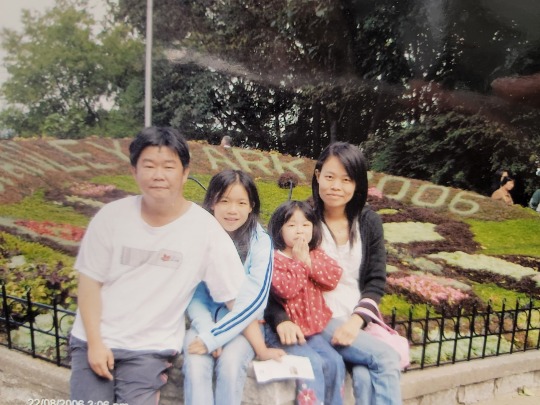
Week 1: WHERE DO YOU KNOW KNOW FROM?
In informing and guiding my own learning through this course, Eugenia Zuroski’s “Where do you know from?': An Exercise in Placing Ourselves Together in the Classroom," opened my eyes to the question of “where do you know from,” and how I position myself in this class when studying the texts, we read. I think it is important to situate ourselves and our learning based on the reflection of where and how our knowledge is informed. For myself, I am a Chinese-Malaysian Canadian settler of colour, who resides on the traditional, ancestral, and unceded territories of the xʷm��θkʷəy̓əm (Musqueam), sc̓əwaθenaɁɬ təməxʷ (Tsawwassen), Stz’uminus, and S’ólh Téméxw (Stó꞉lō) peoples. I was born and raised on this land, studied in the public Canadian education system, and I am a daughter to immigrant parents. When thinking about the question, “where are you from,” especially in the classroom, Zuroski’s article brought to light that this question has histories of anti-immigrant xenophobia. Instead, the question of “where do you know from,” allows us to reflect on how our identity shapes how we learn, and what we learn. Everyone’s identity informs their learning and knowledge in some way, and I think this is so powerful because it allows us to see many different perspectives and understand histories differently. I think this reflection is particularly important for the content of this class, as we will be mapping Vancouver, and exploring the history of British Romanticism, in conjunction with the histories of settler-colonialism in Vancouver.
Since one of the main goals of this course is to situate and contextualize Romantic-period literature in settler Vancouver, I wanted to look back upon my own exploration with literature and Vancouver. The first photo attached is probably the first photo of me reading a book! I discovered my love for literature from an early age, and my current book case still holds many of my favourite childhood books. The second photo is the first time my family visited Stanley Park. Stanley Park holds a very interesting and complicated Indigenous history. The reason my family and I went to Stanley Park that year was because my sister was actually participating in a school project called the Flat Stanley Project. I wish her flat Stanley was in the photograph, but a component of the project was to create their own mini me and explore your city and bring it along your summer explorations. In doing so, the goal of the project was to learn more of the area around you, and I think what we will be doing in this course is sort of reminiscent of that little elementary school project.
0 notes
Note
Hi!
I was inspired by your asks, so I wanted to hear from you! What do you think of Canada as a country? I had a bit of a Canadian phase long ago and I tried to consume as much literature and history as I could, but reading about a place and living in it are very different experiences, so is there anything you'd like to share about Canada, about the culture or the people? Do you like living there? What are some of your favorites things? How do you survive the winters?
And also, as a character, what do you think of Matt?
(´。• ᵕ •。`) ♡
Aaaaaaaaah okay okay *ahem*
If you’re not here for a Ted talk the exit is to your left, have a great day!
I do love Canada very much! I was born and pretty much grew up here, and as I’ve grown older I’ve become more and more grateful for everything that my country has provided for me! I remember my history teacher in high school said once that by being born into the middle class and as a Canadian, you’ve already won the lottery of life. That was not to disparage other countries, but to remind us of how remarkably privileged we are and how much we take for granted.
One of the first things you hear when you ask people what does it mean to Canadian is the word “multicultural.” I find this word realllyyyyyy cringeyyyy and not really reflective of reality, but I suppose it’s a good starting point for more in depth discussion. People often say Canada is a “cultural melting pot”, but the indigenous poet Marilyn Dumont pointed out in her poems that in some ways it’s more of a mosaic — there are many cultures, but they don’t always meld together. To say it’s a melting pot is ignoring the fact that racism and discrimination certainly have and do still exist here.
But I would argue that in some areas it is a “melting pot”, even if I kinda hate that word. I prefer to think of where I live as cultural delta — a place where many mighty tributaries meet as they thunder into the sea. (It is also literally a delta, funnily enough) Here, I grew up absorbing Canadian ideas, studying British history, reading American literature, learning French — but I also grew up listening to Kpop, watching Ghibli, eating rice. When I meet up with friends, we don’t grab a coffee, we grab milk tea. If you ask people here where they would like to visit or live, they will most likely say New York, London, Hong Kong, or Seoul — which tells you a bit about both how powerful and diverse the cultural influences here are.
Perhaps the thing most indicative of Canada’s “multiculturalism” and what I am most grateful for, however, is that I grew up here without fear. I didn’t even know the words “chink” or other words existed until I could access the internet. Recently, the beatings of Asian immigrants in the UK and US brought this home for me — how lucky I am to have such a privileged childhood. And I know this kind of privilege is hard won; in my research of WW2 I found that one of the amusement parks that I used to frequent as a child was built on land that once housed a Japanese internment camp. How fragile our lives are!
But enough about the serious stuff. I can’t really answer your question about how to survive winters in Canada lol, except to say that where I am in Canada it is absolutely necessary everyone own at least 3-4 umbrellas. That’s because this side of the Rockies in BC, the temperatures are pretty mild year round — the coldest it gets is usually 0, and the hottest around 25. But, by god, it rains. I did go to Ottawa in the winter though, where it was -13 one day, but honestly? Everything below 0 feels pretty much the same. Once it gets that cold, you can’t even tell anymore. I wore a skirt and tights that day, with a good, thick winter coat. And I survived :D
Besides not being heckled on the street for being Asian, my favourite things about Canada are probably the amazing diversity of good food and how tremendously beautiful the wilderness here is. And I say this as someone who loses her mind when a mosquito flies past (ie. I am not a nature person). You can kinda tell from these photos here, but the trees and water and whatnot here, are like, real. Maybe I just find that amazing because I lived in Tianjin, but it just feels like this is a city built among the trees and the sky and water that was always here, and not a city where humans have brought in nature for our amusement.
Okay, gotta move on to your other questions or I’ll go on forever. As a state I think Canada does a fairly good job of providing for its own people, but I wish we had a greater global influence. A lot of youth especially express the view that Canada is kinda...boring if your career doesn’t have to do with, like, sports, nature, or medicine, and I would tend to agree. We have great universities, but as someone who studies international relations I often wish Canada would like? Do more? On the global scale. The only thing we really have under our name is the UN peacekeeping, which PM Pearson started after the Suez Canal Crisis. I mean, I’ve heard that many people abroad identify Canada with peace and like ofc I’m not complaining about that, but I just wish our history was a little spicier, ya know? We did kick Americas ass that one time in 1812 and that was amazing. No regrets.
So that brings me to Matt. A lot of Canada’s existence has just been dominated by trying to carve a way between the US and the British while not being swallowed by either. Britain gave us the protection and strength and diversification of identity to not be annexed by the US, but at the same time it hobbled Canada’s relation with our only neighbour. One of the very first treaties Canada negotiated alone, if I’m recalling correctly, was a trade contract with the US over fishing (?) in BC and Alaska, where London was like no you can’t and Canada was like uh we gotta make money too, bro. So yes, while I do believe Mattie is just a very loyal person in general, he was also loyal to the empire because he needed to survive. A lot of Canadian identity was solidified around our prompt assistance of England and the sacrifices made in the two world wars, especially the campaigns in the Low Countries and Italy. Essentially, Canada has historically differentiated itself from the US through its loyalty.
Uuuuh just realized that has nothing to do with my opinion of Matt. Um. I like him? He’s real best friend/big brother material, and I do hc him as far more cunning and capable than canon portrays him to be. However, sometimes he’s just...too nice. He doesn’t have that edge that England has that makes me wanna slap him tf up and sob and call him my baby at the same time. Also, as oumaheroes mentioned here, that kind of selflessness can get pretty toxic. After all, by consistently not voicing or examining your own needs, you make it incredibly and unnecessarily frustrating for the people who care about you to help you, and that creates a relationship just as one sided as one where the person is extremely selfish. Actually, now that I think about it, my biggest gripe with Mattie as a character and Canada as a country is in that word: selfless. Without self. Perhaps because Canada is still so young, but it feels a little lost, a little like it doesn’t know quite know yet why it exists.
TLDR: If you’re under 18 or over 60, Canada is the place to be. If, however, you’re like me and wish you could touch a building that’s over 150 years old and maybe visit a square somebody’s been guillotined in, perhaps try someplace else. Personally Portugal’s golden visa is lookin especially tempting lately
#I’m not on my laptop and I don’t know how to add a cut on my phone#so I’m really sorry if this takes up ur dash#I will fix this as soon as I get home#it’s reining again#thanks for indulging me needcake#ask#also rip i was gonna give book recommendations but tbh does Canada even have literature#I mean we do we DO but#uh have you tried Margaret Atwood? lmfao#i mostly read American and European lit and I feel kinda bad about that#Canadian history is...kinda dry tho idk#maybe it’s cuz I learned it in school
12 notes
·
View notes
Text
2021 and the Rise of Shopping BIPOC, LGBTQI+, Small, and Womxn-Owned
Now more than ever, a collective way of life has been prioritized: shopping from small businesses, particularly those owned by the marginalized. The reason? A mix of a few things, like that of the coronavirus pandemic putting small businesses in every industry in an increasingly vulnerable spot, the rising importance of the Black Lives Matter movement, and the collective awareness of how capitalism has contributed to the downfall of so many communities.
When the pandemic hit, a lot of folks were down on their luck financially. They needed whatever avenue of income they could find to help keep them on their feet, which resulted in them opening small businesses selling their art, jewelry, and more. Shopping small and dining locally was also one of the main efforts done by the collective to ensure community staples wouldn’t have to shut down due to the lack of revenue and financial support throughout the pandemic.
During the height of BLM last summer, one of the ways that folks rallied together to give aid and support to different mutual aid funds, bail funds, and BLM funds was by selling homemade items and giving 100% of the proceeds to these different organizations. With this, there have been threads on Twitter and infographics on Instagram sharing different black-owned small businesses so that folks could directly support the black community.
It’s interesting to see how the rise of social media networks helped pave the way for this, too. Instagram and Facebook both have sections where anyone can sell their products - Facebook marketplace has everything from new and used cars, clothing, furniture, jewelry, and so much more. Instagram (though widely criticised) has updated their formatting so that anyone who uses their platform to sell items gets boosted in ads, and their shopping section is easier to find. Instagram is most accessible for businesses because they don’t charge a service fee like other sites (Etsy, Shopify, etc.) - 100% of the profits goes right back to the shop owner.
Social media sites like TikTok and Twitter have assisted this wave as well. “It costs $0 to retweet my art/business” tweets go viral almost daily, and TikTok itself is filled with trends small businesses love to use to help boost their brand on the algorithm. More recently, brands of all kinds started doing “pack an order with me” TikToks to add a more personalized feel to their business, where consumers get excited to see if their order is one of the ones that gets packaged on the ForYouPage.
Shopping small and from the folks who could use the support most is an incredible way of how community works. It directly supports the dreams and efforts of the folks who put their all into what they make. If it is possible for you, I encourage you to try to shop small and from BIPOC (Black, Indigenous, People of Color), LGBTQI+ (Lesbian, Gay, Bisexual, Transgender, Queer, Intersex, and more), and womxn-owned spots instead of larger corporations. Aiding in the journeys of the folks who took a chance on themselves and started their small business could change everything for them - every dollar could unlock a world of chance.
For those who are interested, here’s a list of a few small businesses (organized by business type) that you can check out and support!
Lifestyle:
Nguyen Coffee Supply - This Vietnamese coffee company was founded by Sahra Nguyen, a first-generation Vietnamese-American who set out to teach about the true quality and production of coffee beans in Vietnam. Partnering with a fourth-generation farmer in Central Valley back in Vietnam, they provide ethically sourced coffee beans to folks worldwide. To purchase Nguyen Coffee or learn more about their efforts, you can shop at https://nguyencoffeesupply.com/ and visit their social media sites @nguyencoffeesupply.
Hungry Bunny - A black, womxn-owned business, this virtual donut shop started in March 2020 as a result of the coronavirus pandemic by Khloe Hines. All products are vegan and cruelty free, not using any dairy, eggs, or yeast! To place orders visit their website https://www.hungrybunnyict.com/ and support their social media @hungrybunny.
Hood Herbalism - A center for learning, this community herbal education project is perfect for BIPOC folks wanting to learn about the benefits of herbalism and how to incorporate it into their lives. Courses range from the basics of herbalism to herbal medicine works for birth support. They offer online courses with payment plans, accommodations, and scholarship funds to support those in need! This project space is intended for BIPOC folks, as herbal schools are predominantly white. To donate to their project or enroll in classes, visit https://hoodherbalism.com/ and follow their social media at @hoodherbalism.
Indigescuela - This BIPOC-led space is dedicated to teaching womxn and folks about intentional healing through the avenues of holistic sexual health, womb health, and traditional healing. Using the knowledge and practices of herbalism, Mexican folk healing, and Mesoamerican medicine, Panquetzani (also the foundress of Indigemama: Ancestral Healing) leads students to finding the healing answers they need to lead as their best selves. The courses range in topics from lifelong self-womb care and womb wellness. To enroll in the online distance courses, head to https://indigescuela.com/ and support their social media at @indigescuela.
Bookstores:
Nā Mea Hawai’i - Meaning all things to do with Hawai’i, Native Books is a space created to share Hawaiian culture through education. If you are based in Hawai’i, or have the opportunity to visit post-pandemic, this is definitely a place to stop by! They support local artisans of all kinds in efforts to uplift their community and all that the Islands have to offer. They have dedicated their space to sharing this knowledge, education, and experiences to all who stop by, virtually and in-person. Shop their website https://www.nativebookshawaii.org/ and follow them @na_mea_hawaii.
Raven Reads - This bookstore is indigenous and womxn-owned, which began as an effort to share history and inspire folks as a result of what residential schools did to the indegnous communities in Canada, where languages and ways of life were washed away over the years. They offer collection boxes for children and adults, where each season a curated box will be sent to you filled with Indegenous works. To shop, support, and learn more, their website is https://ravenreads.org/ and their social media is @raven_reads.
Strong Nations - The online retailer is centered around idigenous literature and art, where their products range from children’s toys to classroom materials and, of course, literature. They are also a publishing house, offering a range of services for those interested. They also offer a wide variety of bundles in different categories! Each item on their shop has a badge on it to signify if it is indegnous art, a Canadian product, or indegnous text. If you are looking for indenous literature or works of different kinds, materials for your classroom, and more, stop by https://www.strongnations.com/ or @strong_nations.
Marcus Books - The first black-owned bookstore in the nation, Marcus Books is filled with history and the desire to educate and make space for black folks and all allies. Their goals of using literature to educate and unite communities has served folks in and around the San Francisco Bay Area (based in Oakland, CA) and nationwide through their online store. They have books for all ages in every genre by an array of black and latinx authors. To support, their website is https://bookshop.org/shop/marcusbooks or visit their social media @marcus.books.
Loving Me Books - A black and womxn-owned shop, Angela Nesbitt created this online bookstore to promote self-love amongst children of all races and backgrounds. Books are available for all age ranges and in a variety of languages! They also sell children’s clothing and accessories. There is a section for adult books, as well! Check out https://www.lovingmebooks.com/ and @lovemebooks for your next book.
Skincare:
Alma Bella - Meaning “beautiful soul” in Spanish, this womxn-owned skincare business is the epitome of self care with a cause. Creator Hannah Bahls, based in Washington state, handmakes this heavenly coco cream and redistributes 100% of the net profit to different BIPOC-led social justice funds. With more products coming soon, they prioritize organic, ethically sourced and traded, and natural ingredients. Each month, she chooses a new organization to give the proceeds to. To learn more about Alma Bella, their product and mission, head over to https://alma-bella.square.site/ or their Instagram @almabellanourish to learn more about how they emphasize self and community care.
HanaHana Beauty - Sustainable, clean beauty that uplifts womxn of color. All products are made with natural ingredients and oils, like fair-trade shea butter. They source their shea butter from the Katariga Women’s Shea Cooperative in Ghana. The black and womxn-owned shop includes body butters, bars, lip balms, and exfoliating cleansers. To buy, head to their site https://hanahanabeauty.com/ and follow at @hanahana_beauty.
BrownSugga Beauty - Black owned, vegan beauty for all skin types. Offering a variety of products from sugar scrubs to oil serums, body butters and soap bars, the New Orleans based online business is your one-stop-shop for healing and maintaining beautiful, healthy skin. Shop now at https://brownsuggabeautycompany.com/ and follow them at @brownsuggabeauty_.
Haípažaža pĥežúta - Meaning “medicine soap” in Lakota, this indegnous-owned skin care from Lakota folks sells soaps and herbal products nationwide. They utilize organic ingredients harvested from the homelands as well as fair-trade ingredients from across the world to create healthy, intentional products. The products range from soaps, shampoos, rubs, perfumes, bath bombs, scrubs, and more. (They even offer refills of some of these products)! To purchase, find them at https://www.haipazazaphezuta.com/ and @haipazaza.
Beauty:
Live Tinted - Founded by Deepica Mutlaya, Live Tinted is a brand dedicated to inclusion and diversity within the beauty industry. They use their platform to highlight multicultural beauty - giving space to voices and stories of those often underrepresented in the industry. Their products range from ethically sourced merchandise, huesticks, and gorgeous illuminators. Take a peek for yourself at https://www.livetinted.com/ and @livetinted on their different social media platforms.
Sahi Cosmetics - This small, family-owned cosmetics company has been taking the beauty industry by storm. Founder Shelly Sahi started Sahi cosmetics as a way to change the beauty standards we have become accustomed to after growing up feeling like her Indian skin wasn’t beautiful enough and always had trouble finding products that matched her complexion. Committed to their clean beauty promise, all of their products are cruelty and paraben free, with vegan friendly ingredients. An array of makeup and innovative products and ideas that will surely leave you obsessed! They also offer some clothing merchandise as well. Check them out at select retailers, their website https://sahicosmetics.com/ and their social media @sahicosmetics.
Queltzin Cosmetics - An indegenous-owned beauty brand specializing in fake lashes, all of their products are named after Aztec gods and goddesses as well as Nahuatl words to honor and educate folks about their indegenous heritage. Aside from lashes and lash tools, they offer some apparel and makeup accessories and tools, as well. Shop at https://queltzincosmetics.com/ and visit them at @queltzincosmetics.
Sweet Street Cosmetics - A Latina/womxn-owned cosmetics company that honors the around-the-way aesthetic. This brand was built by Natalia Durazo and LaLa Romero, who also co-founded the clothing company Bella Doña. their brand honors the beauty strides made by womxn of color and celebrates all the uniqueness and individuality that comes with it. Their products include a highly praised liquid liner, lip duos, eyeshadows, and lashes. Shop now at https://www.sweetstreetcosmetics.com/ and follow them @sweetstreetcosmetics.
Clothing:
Wasi Clothing - A Quechuan word meaning “hope,” Wasi is a brown-owned Bolivian-American clothing company founded and run completely by Vanessa Acosta. This business is dedicated to ethical and sustainable products and processes, as well as diverse representation in the fashion world. Their products are unique and there truly is something for everyone here, as their shop includes everything from clothing to accessories to accessories and prints! You can shop their website at https://wasiclothing.com/ and follow at @wasiclothing.
OXDX Clothing - Diné owned label, this indegnous brand offers merchandise to represent Native peoples and honor their experiences. Their mission includes preserving culture to art, clothing, creative content and storytelling. Their shop has unique pieces of clothing, art, and stickers. Shop at https://www.oxdxclothing.com/ and support them at @oxdxclothing.
Ginew - That Native-owned denim line honors the founders’ Ojibwe, Oneida, & Mohican heritage through the materials and concepts utilized to create their products. Their shop ranges from denim products (jackets, jeans, etc.) as well as unique jewelry, bandanas, and more. Shop all things Ginew on their website https://ginewusa.com/ and follow at @ginew_usa.
Art:
Hafandhaf - This Pakistani-born and Detroit raised artist uses her South Asian and Muslim roots to create art that reflexts her experinces and the life around her. She uses her background studying the Quran and Arabic and incorporates it into her work. She offers commissions, as well as prints. Many of her pieces were turned into other merchandise, like clothing, mugs, stickers, and accessories. To shop, visit https://hafandhaf.com/ and follow their social media @hafandhaf.
Adinas Doodles - Kichwa artist Adina Farinango creates Kichwa diasporic art. In hopes to heal and reclaim her Kichwa roots and her identity as an idigenous womxn, her art is a form of resistance. Her one of a kind art is available in prints, stickers, and on totes! Shop https://www.adinafarinango.com/ and follow @adinasdoodles.
Accessories:
BRWNGRLZ - The Pinay-owned jewelry company specializes in laser cut pieces that represent and honor Pilipinx heritage and brown pride. These unique, astounding pieces are only found at BRWNGRLZ. This space honors the stories of Pilpinx-identify folks while uplifting the voices of BIPOC folks everywhere. To support and shop, visit www.brwngrlz.com/ and follow at @brwngrlz.
Customized by Angelisa - Polynesian-owned customizable shop that does everything from trays to accessories! This shop is perfect for customized gifts and pieces for your space! Angelisa’s shop has rolling and coffee trays, resin jewelry, keychains, tumblers, and music player plaques. To shop and customize your own pieces, head to https://www.etsy.com/shop/customizedbyangelisa/ and @cbangelisa.
Spirituality:
Stari Agency - Run by Yakari Gabriel, Stari Agency is an Afro-Latina business regarding all things astrology. Yakari offers birth chart readings, transit readings, and follow ups. She aims to help you heal and learn more about you as you navigate your life’s journey. To book and learn more about these services, you can visit https://stariagency.com/ and @stariagency.
The Woke Mystix - Podcasters and authors Ellen and Imani create space for folks to find themselves in astrology, spirituality, and divinity. This WOC-owned business co-wrote Astrology SOS: An astrological survival guide to life, which releases on March 2, 2021. To listen to their podcast and learn more about their work, check out https://www.thewokemystix.com/ and @thewokemystix.
Dian Tala Crystals - This Filipinx-womxn owned crystal shop was created in hopes of offering affordable and accessible means of crystals and their healing properties. In efforts to offer exploration into intuition and personal guidance, this shop holds a variety uniquely cut crystals while teaching followers the properties of each. All funds go directly to the owner’s tuition, as well as direct relief funds to their family’s provinces when the recent typhoon hit the Philippines. To shop and support, follow their Instagram shops @diantalacrystals and @diantalasales.
Farial Eliza (she/her) is a twenty-one year old Bay Area native, occupying unceded Chochenyo Ohlone land. She is a writer, poet, creator, storyteller, self-proclaimed healer and educator to the communities she serves.
4 notes
·
View notes
Text
Okay, not to go all Studyblr on y’all, but I keep forgetting some teachers are so deep into Western ways of knowing, they don’t tell you things like yes, there is a time and a place to use first-person pronouns in essays and actually there are fields and subjects of study where it can be detrimental not to do so!
It’s also good to know this for those of you who are like, “Ugh, essays,” but you anticipate doing a writing-intensive major, anyway. There is hope for you, fam.
Anyway, before we get to that, here’s a few hot tips from someone who’s survived it all and learned some things that I wish I’d known going into uni:
- First of all, just speaking to the humanities here, but did you know that you can get a BA in one field and an MA in another? So, for example, if you decide to get a Studies in Women and Gender BA, you can get an English MA afterwards. Why do this? Because I don’t care what your grandfather says, things like gender studies are super important and if your school has a solid program, you’re going to learn all the reading and writing stuff you need to do well in any kind of humanities post-grad job. So, consider: if you love writing, but you’re not keen to suffer four years of Western Canon lit (don’t blame ya), you could... take gender or cultural studies instead. Same skill set, much more interesting coursework.
- This brings me to my second point: get into a major that gets you riled up and genuinely inspired to help make a change. If you’re passionate about social issues, if you have a marginalized identity, if you just want to learn to be a better ally and do something that feels meaningful to you, consider majors outside the box. Major in Pacific and Asian Studies! Major in African-American or Black Canadian Studies! It’s like History and English all rolled together into an experience where you are going to learn things that horrify you, things they never told you in high school, things that may take an emotional toll on you, but which will leave you so impassioned that you will be writing your essays with the fire of a thousand suns and encounter the opposite problem of blank doc panic: “that’s too many words, save some for class discussion!”
- THIRD, this is where we can start to talk about why first-person pronouns in essays are GOOD and VALID and VERY NECESSARY in the right context. Check out this handout from The University of North Carolina at Chapel Hill (disclaimer: I’m not associated with this uni and I don’t know anything about them, but this is a useful handout so I’m linking it). This handout gives examples of several fields and how you might use first-person pronouns in essays for those fields, namely: Philosophy; Religion; Literature, Music, Fine Arts, and Film; Women’s Studies; History; and *drumroll* Sciences (wild, I know, but yes, there are cases where first-person pronouns are relevant to use in STEM stuff).
To that list, I’d like to add: Indigenous Studies, which is my own degree field and one I’m extremely passionate about and the reason that I’m about to show you an example of how powerful first-person pronoun essays can be from within the field of Indigenous Studies. If you’d like more examples from the field, I can definitely hook you up, so feel free to @ me and I’ll get back to you.
The excerpt below is taken from one of my favourite Indigenous authors, Leslie Marmon Silko, a writer and poet from the Laguna Pueblo Reservation in New Mexico. Specifically, this is from her essay, “Language and Literature from a Pueblo Indian Perspective.” The essay begins:
Where I come from the words most highly valued are those spoken from the heart, unpremeditated and unrehearsed. Among the Pueblo people, a written speech or statement is highly suspect because the true feelings of the speaker remain hidden as she reads words that are detached from the occasion and the audience. I have intentionally not written a formal paper because I want you to hear and to experience English in a structure that follows patterns from the oral tradition. For those of you accustomed to being taken from point A to point B to point C, this presentation may be somewhat difficult to follow. Pueblo expression resembles something like a spider's web -with many little threads radiating from the center, crisscrossing each other. As with the web, the structure emerges as it is made and you must simply listen and trust, as the Pueblo people do, that meaning will be made.
My task is a formidable one: I ask you to set aside a number of basic approaches that you have been using, and probably will continue to use, and instead, to approach language from the Pueblo perspective, one that embraces the whole of creation and the whole of history and time.
You can read the rest of this essay (only 13 pages long) via this PDF link from UNM or by searching the title through your school’s library search engine.
I want you to notice something Silko says in her opening above: “I have intentionally not written a formal paper (...).” AHA, your stuffy professor is likely to say, this proves that first-person pronouns have no place in a formal essay, doesn’t it? The answer to that is a flat no, to which I would like to add: informal essays have a place in academia, and subjectivity is not (repeat: not) a dirty word, it’s an honest one.
Consider a completely random paper out of my collection by Warren Cariou, of Métis and European heritage. His title is “Who Is the Text in This Class?: Story, Archive, and Pedagogy in Indigenous Contexts.” (This is from a book of mine, so I don’t have a PDF link; try searching your library). His essay begins thus:
I am trying to remember the story. It’s there somewhere, waiting to be unpacked, tracked down, navigated, activated. I’ve carried it with me all these months, a weightless invisible thing, a gift, a spirit maybe, and now I want to call it back so I can tell you about it, so I can offer an interpretation. Or, at least, so I can cite my sources.
Catch that bit of academic humour at the end there? Yeah, guess what, you can be funny in essays. You can be human in essays. There is space for that in academia. And those spaces, in my opinion, are some of the very best for you to be part of if you want to be able to stretch your wings and get empowered to make a difference through your education.
Remember that the next time Uncle Bill or Your Mom or That One Rando At The Airport tells you XYZ majors “aren’t real” or “aren’t going to get you anywhere.” Those people are spouting prejudices they don’t even know they have. Don’t let them hold you back from getting into something that’s going to leave you feeling happy and fulfilled and like you actually learned something worthwhile.
#studyblr#college tips#I've outed myself as a nerd#sorry to my followers#I don't usually post about school stuff#'cause I come here to chill#but uhhh in case you were wondering what I do#besides write a lot of fanfiction#*gestures vaguely to post*#little bit of this little bit of that#;)#not descendants#(obviously)#haha#sparrow.txt
10 notes
·
View notes
Text
wimpydemons replied to your post: indian horse is a book by the late richard...
I read this one novel, back in high school; where the main protagonist was taken away from his family, and he soon ‘lost’ his native identity, and it was a story of how he went back to his home place, found himself again and his culture, and I got so overwhelmed because of how the author was so descriptive of the pain and the emotions were in it. I can’t remember the novel’s name but I really liked it.
i believe that’s keeper’n me, also by richard wagamese! i read that for my canadian native literature class last term. it could be something else, though, but i’ve got wagamese on the brain dfkgjsdlfk
native authors (and, after having read some for my metis lit. class, metis authors) have such... a fluid grasp on how to write. like idk how to describe it, maybe i’m just biased, but i always love how indigenous authors’ sentences flow
8 notes
·
View notes
Text
Art and Individuality
Who am I to interpret nature through art? I am an individual of course! Every person’s perspective is a little bit different and for this reason I believe that art is simply an individual’s way of expressing this perspective. Even a cover of a song or a remake of a painting is someone’s unique interpretation of a piece of art. As such, nature exists to be interpreted by people who have the privilege of experiencing it and shared with those who do not. A painting of a landscape may inspire feelings within a person about that place that they may not have experienced otherwise. To be able to see something through someone else’s eyes is a concept that seems practically impossible but is quite simple in reality. When you look at a picture or a painting, you are seeing the artist’s interpretation of the subject. It helps to see things through a new lens and consider things from a new perspective. These new experiences help us to grow as people.

Lucius R. O'Brien Sunrise on the Saguenay, Cape Trinity (1880) Courtesy of the National Gallery of Canada.
I have never been very artsy so paintings have never really struck a chord with me, but for some reason this painting makes me feel a sense of adventure that I can’t quite describe. All I can think of is how much fun it would be to sail on that lake or base jump from that cliff!
As a student of science, I believe that this is an area that is often neglected in our field. Scientists are not usually asked to express their ideas in artistic ways, opting for concrete research published in peer reviewed scholarly papers instead. It seems to me like the social diseases described by Dr. Kurt Hahn, as outlined in our Unit 4 content, have only become more prevalent as time has progressed. The decline of initiative and enterprise, memory and imagination, and skill and care are especially concerning. The rise of technology and social media have made it much easier to become a passive observer of the world around you rather than an active participant. We aren’t taught to be whimsical and creative in our ideas and the ways that we express them.
However, these things have also created countless new ways to express yourself. During this pandemic in particular, platforms such as Tik Tok have grown substantially and present a new opportunity for people to share information and their own unique perspectives with the world. Educational content has become more popular with people posting things about science, history, art, culture, and just about anything else you can think of. I believe that this is “the gift of beauty”. People being able to share things that they are passionate about in their own creative and unique way. Is it not our job as nature interpreters to help others find their own sense of beauty within nature? To do this we have to be able to communicate our perspectives in as many different and creative ways as we can.
https://vm.tiktok.com/ZMeJa2CMT/
The fact that I have absorbed more information about indigenous culture from Tik Tok than from my Canadian education is probably pretty concerning and speaks to how effective platforms like this are for education.
For this reason, I believe that art should become a much bigger part of scientific education. Art, in any form, can help to convey complex ideas in ways that are more easily understood by a larger variety of people. After all, not everyone is trained to read, understand, and learn from scholarly articles like we are. I think that kids should be taught to think and express their ideas creatively from a young age. As we learn more about the world and we deal with complex concepts such as climate change, it will only become more important to refine the mediums through which we share information. Being able to share these concepts with the general public is probably the most important responsibility for us as scientists. That’s why I am so excited to make podcasts for our class! Training our ability to creatively share ideas with people is crucial to our education (not to mention making a podcast is way more fun than sitting down and writing an academic paper!).
With all this being said, I want to ask you guys a few questions:
- What are some artistic mediums that you believe science should expand into?
- How do you believe younger generations should be educated about the world and how it is changing?
Thanks for reading!
- Zaid
Literature Cited
Hooykaas, A. (2020). ENVS*3000 Nature Interpretation course notes. Retrieved February 3, 2020, from https://courselink.uoguelph.ca/d2l/le/content/666945/viewContent/2591221/View
0 notes
Text
Sharing the Disciplines
By Rainer Baehre
At MUN’s Grenfell campus, I am an historian in the Historical Studies program and cross-listed with Social/Cultural Studies. As my training is in history, tangible historical evidence remains integral to my work. Yet I have also relied on sociology and related social science disciplines to frame and address questions of interest in order to make sense of historical persons, groups, events, and developments. I apply these ideas to topics that resonate in the present, such as racism, social inequality, and marginality. How I got to where I am is a bit of a shaggy dog story.
My journey began as an undergraduate student at the University of Waterloo during the heady Counterculture days of the late-1960s and early 70s. Initially, I dabbled in philosophy and psychology, thinking that they would reveal the workings of the human brain and human consciousness. In my effort to acquire further insight into the turbulent and often contradictory world of the civil rights movement, political assassinations, the Vietnam War, the nuclear arms race, student protest, decolonization, and so on, I was also attracted to the writings of the New Left and neo-Marxist critiques of modern capitalist society. To make a long story short, I found studying psychology and philosophy, though often interesting, too limited and too narrowly defined for my liking in helping me to find better answers to the “big” questions that befuddled me, a somewhat disillusioned twenty-something.
During my senior years as an undergraduate, I began taking history courses. I had never considered this discipline as a field of study, even though “history” had heavily shaped my upbringing. My parents had grown up in Nazi Germany and my family on both sides had experienced the horrors of war. The heightening Cold War and the threat of World War III prompted my parents to leave Germany in 1952, when I was three-year old, and to settle in Kitchener-Waterloo. While I was raised as a “Canadian,” I nevertheless always remained acutely aware of my origins, a self-conscious awareness and formative identity that follow me to this day, which give me a particular perspective as an outsider.
After finally finishing my undergraduate degree and before entering graduate school at the University of Waterloo, serendipity intervened. I was hired as a part-time research assistant, then course instructor, in an experimental Field Studies program headed by sociologist Dr. H. David Kirk at the University of Waterloo. (Professor Kirk passed away on December 14, 2019, at the age of 101.) I cannot understate how important David Kirk was, first, as a professor, then mentor and good friend. The Field Studies program he designed focused on participant and non-participant observation, and students were placed in settings such as a magistrate’s court, churches, and hospitals. In such settings, students were expected to study what their sociology text had to say about “society” and compare the text with their own observations in order to develop a more critical and grounded understanding of the discipline and to move away from recipe knowledge, that is simply reading the assigned material and following the “menu” uncritically without further thought. I was hired primarily because of my previous work experience as a resource person at the long defunct Allen Street Free School in Waterloo and as a junior attendant in a psychiatric hospital, as well as my critical perspectives on the educational system, as it then existed, and on my personal and direct observations of institutionalization and decarceration.
Kirk taught me classical and modern sociological theory, as well as basic qualitative and quantitative methods. For the first time, I became acquainted with the works of Durkheim, Weber, Simmel, and Veblen as well as contemporary sociologists such as Hughes, Mead, Merton, Mills, Whyte, Goffman, Berger, Luckmann, and others. Rather than emphasizing biological and structural factors, Kirk’s own research was heavily influenced by symbolic interactionism, that is, examining how social/cultural beliefs became internalized and how they shaped our lives and identities. This is demonstrated in his book Shared Fate: A Theory of Adoption and Mental Health (New York: Free Press, 1964; revised edition 1984 subtitled A Theory and Method of Adoptive Relations). He also believed in grounding theory in direct observation, in seeing if and how sociological models worked in the particular, or in other words, in an individual’s everyday world.
We also shared some other important elements. Kirk was German-born and of Jewish background, raised in an upper-class secular household. He was sent to England by his parents at the beginning of the Nazi era and then went on to the United States, where his parents joined him in 1938 after Kristallnacht. A Quaker and conscientious objector during World War II, Kirk gradually returned to his Jewish roots and became preoccupied with the Holocaust – what had happened and why. Our common German backgrounds and common interest in historicism led to many conversations about stigma, ideology, racism, social movements, irrationality, totalitarianism, and total institutions. During those days, I read extensively about the Holocaust and joined him, as his research assistant, on trips to Vienna where we met the Nazi-hunter and Holocaust researcher Simon Wiesenthal, observed the war crimes trial of the architects of Auschwitz Fritz Ertl and Walter Dejaco, and interviewed camp survivors, and subsequently went to Israel. The personal impact of reading this literature, our attempts at analysis, and personal contact with living history cannot be understated. These readings and encounters left an indelible impression, both intellectually and emotionally, and still influence how I shape much of my research, especially in examining what I consider significant historical questions by using oral history, as well as traditional historical sources.
Subsequently, I became drawn ever more to historical research, as a way of understanding the present, and I completed an MA in European and Russian history, including writing a major cognate essay on Hitler and how he reflected Max Weber’s concept of charisma. I also took a course on European intellectual history, which introduced me to the works of Michel Foucault and Paul Ricoeur, who have since influenced many disciplinary modes of thinking.
I decided then to take another graduate degree in Canadian instead of European history, though my previous influences carried over. In one course, I examined the ideological origins of the Kingston penitentiary and for my M.Phil. Thesis focused on the emergence of nineteenth-century Ontario psychiatry, influenced in my thinking by Marx, Weber, Goffman, and Foucault. During my subsequent doctoral studies at York University, I extended my work on the early history of Canadian psychiatry, its founders, and its institutions, shaped by Foucault’s idea of “power/knowledge” – an approach which made some members of my doctoral committee very unhappy, as inappropriately theoretical, and not historical. Although history, as a discipline had by then begun to shift gradually towards social and cultural perspectives, topics such as the state, social welfare, institutions, incarceration, stigmatization, and marginal peoples were still viewed by more traditional Canadian historians as belonging to sociology or social work, not to history.
After coming to the Grenfell campus in 1989, my research and teaching interests shifted yet again, now focusing more on topics related to Newfoundland and Labrador’s social and cultural history. In Outrageous Seas: Shipwreck and Survival in the Waters off Newfoundland, 1583-1893 (Montreal-Kingston: McGill-Queen’s University Press, 1999), I attempted to use shipwreck narratives as a way of understanding maritime encounters with the sea, by means of historical narratives. I was interested in “fate” and the trauma of shipwreck, how survivors made sense of and gave meaning to their experiences in the face of “nature,” and how their thoughts and beliefs reflected important aspects of Newfoundland’s social and cultural identity. More recently, I have worked on aspects of the province’s Indigenous history, such as addressing the role and pre-eugenics discourse of nineteenth-century medicine, anthropology, and ethnology in constructing the stereotype of “the Eskimo” of Labrador. I have also studied the former “jackatar” community of Crow Gulch and the relocation of former residents into Corner Brook’s first assisted housing projects. It had never been written about by scholars, and I relied heavily on local interviews to collect information and make sense of its history. How this community was viewed during municipal urban renewal schemes of the 1960s illustrates passive forms of local racism and micro-aggressions against peoples of French and Mi’kmaq descent, how stereotypes rooted in history and social and economic inequality developed, and how the current identities of individuals linked intergenerationally to Crow Gulch now see themselves within that historical context.
In closing, I am very comfortable in describing my scholarly place as “historical studies.” I no longer see historians engaged in an entirely “objective,” top-down, empirical enterprise – which is what I was first taught. I am equally comfortable in looking to sociology and anthropology for theoretical and methodological insights and information as well as to oral history for hearing and giving voice to previously voiceless individuals. I also have always attempted to ground my work within an empirically based historical context as opposed to fitting it into a theoretical framework. Nevertheless, I also continue to pay heed to current social theorists, sociologists, and anthropologists who write about post-modernism, intersectional theory, post-colonial theory, identity theory, disability theory, and gender theory. And I remain convinced that one cannot understand the present without placing our social and cultural worlds into an historical context. To that end, historians need to examine the theoretical and the particular, the interrelationships between the macro and the micro, and what other disciplines have to say about the past.
0 notes
Photo
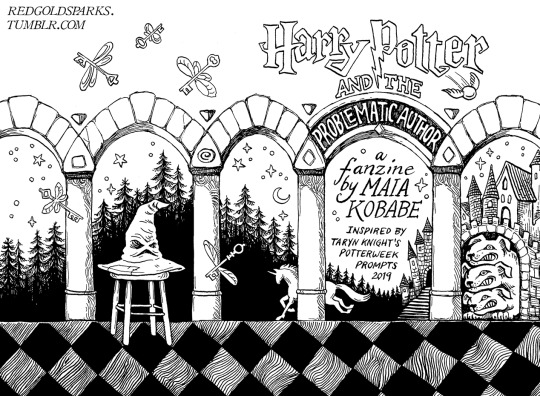

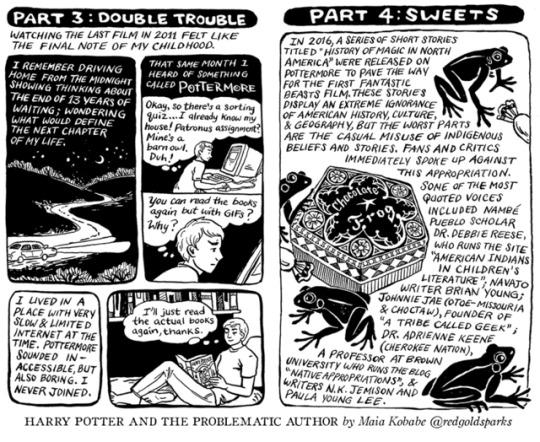




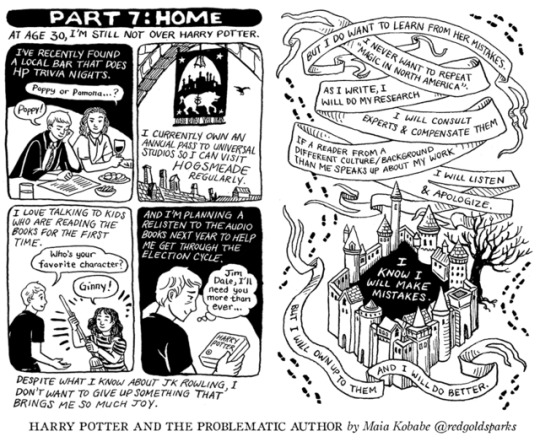

Harry Potter and the Problematic Author, a fanzine by Maia Kobabe. You can find a print version of this zine in my etsy shop. 50% of print proceeds are donated to the Native American Rights Fund. This zine was made possible by my wonderful patreon backers.
instagram / patreon / portfolio
Full transcript below the cut:
Part one: Ruddy Owls!
I was in fourth grade when the first Harry Potter Book was released in the US.
Panel 1: Sometimes our teacher would read it aloud in class. "Mr and Mrs Dursley of number 4 Privat Drive were proud to say they were perfectly normal, thank you very much..."
Panel 2: I was 11 years old when Harry Potter finally broke through my dyslexia and turned me into a reader.
Panel 3: Every night in the summer before sixth grade I waited for the owl carrying my Hogwarts Letter. I cried when it didn't come. "I have to go to Muggle school!"
Part Two: Hats
I dedicated myself to being a fan.
Panel 1: I began collecting Harry Potter News article.
Panel 2: I asked my relatives to mail me ones from their local papers. I filled a thick binder with clippings.
Panel 3: I wrote my own trivia quiz
Panel 4: and participated in the one held annually at the county fair. "Next contestant!"
Panel 5: I usually got into one of. the top five spots. I won boxes of candy, posters, stationary, and once a baseball cap. (Hat reads: I survived the battle of Hogwarts).
Panel 6: In high school I sewed a black velvet cape and knitted many stripped scarves.
Part Three: Double Trouble
Watching the last film in 2011 felt like the final note of my childhood.
Panel 1: I remember driving home from the midnight showing thinking about the end of 13 years of waiting; wondering what would define the next chapter of my life.
Panel 2: That same month I heard of something called Pottermore. "Okay, so there's a sorting quiz... I already know my house! Patronus assignment? Mine's a barn owl. Duh!"
Panel 3: You can read the books again but with GIFs? Why?
Panel 4: I lived in a place with very slow and limited internet at the time. Pottermore sounded inaccessible, but also boring. I never joined.
Panel 5: "I'll just read the actual books again, thanks."
Part Four: Sweets
In 2016, a series of short stories titled "History of Magic in North America" were released on Pottermore to pave the way for the first Fantastic Beasts Film. These stories display an extreme ignorance of American history, culture, and geography, but the worst parts are the casual misuse of indigenous beliefs and stories. Fans and critics immediately spoke up against this appropriation. Some of the most quoted voices included Nambe Pueblo scholar Dr. Debbie Reese who runs the site "American Indians In Children's Literature"; Navajo writer Brian Young; Johnnie Jae (Otoe-Missouria and Choctaw), founder of A Tribe Called Geek; Dr Adrienne Keene (Cherokee Nation), a Professor at Brown University who runs the blog "Native Appropriations", and writers N.K. Jemison and Paula Young Lee.
Rowling is famous for responding to fans directly on twitter, yet she did not respond to anyone calling out the damaging aspects of "Magic in North America." Her representatives refused to comment for March 9 2016 article in the Guardian. She has never apologized. All of this, plus the casting of Johnny Depp and the specific declarations of support by JKR, Warner Brothers, and director David Yates left a sour taste in my mouth.
For further thoughts on the new films read The Crimes of Grindelwald is a Mess by Alanna Bennett for Buzzfeed News, November 16, 2018.
Excerpt from Colonialism in Wizarding American: JK Rowling's History of Magic in North America Through an Indigenous Lens by Allison Mills, MFA, MAS/MLIS (Cree and Settler French Canadian)
Although Rowling is certainly not the first white author to misstep in her treatment of Indigenous cultures, she has an unprecedented level of visibility and fame, [...] One of the most glaring problems with Rowling’s story is her treatment of the many Indigenous nations in North America as one monolithic group. [...It] flattens out the diversity of languages, belief systems, and cultures that exist in Indigenous communities, allowing stereotyping to persist. [...] It continues a long history of colonial texts which ignore that Indigenous peoples still exist. [...] In the Wizarding world, as in the real world, Indigenous histories have been over-written and our cultures erased.
from The Looking Glass: New Perspectives in Children's Literature Volumn 19, Issue 1
Part 5: Music
Panel 1: Also in 2016 I discovered two podcasts which radically altered my experience of being an HP fan. The first was Witch Please created by two Canadian feminist literary scholars Hannah McGregor and Marcelle Kosman.
Panel 2: "If it's not in the text it doesn't count!" "Close reading ONLY!"
Panel 3: They talk about Harry Potter at the level you'd expect in a college class with particular focus on gender, race, class, and the troubling fatphobia, fear of othered and queer coded bodies, violence against women, white feminism, gaslighting and failed pedagogy in the books. They bring up these issues not because they hate the series, but because they LOVE it.
These passionate, joyful conversations went off like fireworks in my mind. I had never taken a feminist class before. I gained a whole new vocabulary to talk about the books- and the world.
Panel 1: The second podcast I started that year was Harry Potter and the Sacred Text, created by two graduates of the Harvard Divinity School, Vanessa Zoltan and Casper Ter Kuile.
Panel 2: They read one chapter per episode through a theme such as love, control, curiosity, shame, responsibility, hospitality, destruction, or mystery. Like Witch Please, they are interested only in the information on the page, not thoughts from the author. The delights and failures of the text are examined in the context of the present day, and new meanings constantly arise.
What does it mean to treat a text as sacred?
Trusting that the more time we give to it, the more blessings it has to give us.
Reading the text repeatedly with concentrated attention. Our effort is part of what makes it sacred. The text is not in and of itself sacred, but is made so by rigorously engaging in the ritual of reading.
Experiencing it in community.
"To me, the goal of treating the text as sacred is that we learn to treat each other as sacred." -Vanessa Zoltan
Part 6: Tooth and Claw
In October 2017, Rowling liked a tweet linking to an article arguing that trans women should be kept out of women's bathrooms because of cisgender women's fears. In March 2018, she liked a tweet about the problem of misogyny in the UK Labour Party which included the line "Men in dresses get brosocialist solidarity I never had." The author of the tweet had previously posted many blatantly anti-trans statements.
Rowlings publicist claimed she had liked the posted by accident in a "clumsy and middle-aged moment." Yet, in September 2018 she liked a link posted by Janice Turner to her column in the Times UK titled "Trans Rapists Are A Danger In Women's Jails."
Screencaps of these tweets can be found in the article "The Mysterious Case of JK Rowling and her Transphobic Twitter History", January 10 2019 by Gwendolyn Smith (a trans journalist), LGBTQNation.com
Excerpt from: Is JK Rowling Transphobic? A Trans Woman Investigates by Katelyn Burns
Ultimately, the answer is yes, she is transphobic [...] I think it’s fair that she receives criticism from trans people, especially given her advocacy on behalf of queer people in general, but also because she has a huge platform. Many people look up to her for creating a singular piece of popular culture that holds deep meaning for fans from different walks of life, and she has a responsibility to handle that platform wisely. (Published on them.us March 28, 2018)
Part 7: Home
At age 30, I'm still not over Harry Potter.
Panel 1: I've recently found a local bar that does HP trivia nights. "Poppy or Pomona?" "Poppy!"
Panel 2: I currently own an annual pass to Universal Studios so I can visit Hogsmeade regularly.
Panel 3: I love talking to kids who are reading the books for the first time. "Who's your favorite character?" "Ginny!"
Panel 4: And I'm planning a relisten to the audio books to next year to help me get through the election cycle. "Jim Dale, I'm going to need you more than ever..."
Despite what I know about JK Rowling, I don't want to give up something that brings me so much joy.
But I do want to learn from her mistakes. I never want to repeat "Magic in North America." As I write, I will do my research. I will consult experts and compensate them. If a reader from a different culture/background than me speaks up about my work, I will listen and apologize. I KNOW I WILL MAKE MISTAKES. But I will own up to them and I will do better.
Excerpt from Diversity Is Not Enough: Race, Power and Publishing by Daniel José Older
We can love a thing and still critique it. In fact, that's the only way to really love a thing. Let's be critical lovers and loving critics and open ourselves to the truth about where we are and where we've been. Instead of holding tight to the same old, failed patriarchies, let's walk a new road, speak new languages. Today, let's imagine a literature, a literary world, that carries this struggle for equity in its very essence, so that tomorrow it can cease to be necessary, and disappear. (Buzzfeed, April 14, 2017)
Harry Potter is flawed, & JK Rowling is problematic. But the books helped me learn a lot:
*One of the greatest dangers facing the modern world is the rise of fascism
*The government cannot be trusted
*Read and think critically
*Question the news: who paid the journalist? Who owns the paper?
*Trust and support your friends through good times and bad
*Organize for resistance
*Educate and share resources with peers
*The revolution must be diverse and intersectional
* We are only as strong as we are united
*The weapon we have is love
MK 2019
1K notes
·
View notes
Text
Lesson 15, Task 2: What has influenced me?
Culture is the language, beliefs, values, norms, behaviours, and material objects that are passed on to future generations of society; while material culture, specifically consists of items within a culture that you can taste, touch, and feel. In a generation infused by mass and social media and at the height of globalization, it’s not hard to understand why a person would be influenced by cultures from around the world. Especially, in the form of material culture as it seems to be the most accessible and appealing to our sensory overstimulated society. It is well known that through processes like socialization our own personal cultures shape and influence us as people. But how often do we consider the impact other cultures around us have, particularly in a country like Canada that defines itself as a cultural mosaic and which in 1988 passed the Canadian Multicultural Act; the first national multiculturalism law in the world? I will be discussing just that in this essay and looking at how cultural aspects such as entertainment, fashion, food, architecture, and leisure activities outside of my own culture influence me.
Entertainment
Whether it's by watching Senegalese movies, listening to Balkan music, playing Japanese video games, gazing at Incan sculptures, or reading Soviet novels and multicultural Sufi poetry; entertainment makes a large part of the “foreign” cultures I consume thanks to the extent of mass and social media. Given my own diverse ethnic and cultural background, I have always been interested in different cultures. One of the most influential sources of my interest came in the form of Mexican and Hispanophone-South American telenovelas. Given that my parents come from Cuba and Brazil, respectfully, to someone looking from an outsider prospective it may be confusing how i.e. Mexican, Peruvian, or Argentinean cultures are that different from mine. However, Latin America is neither a cultural nor a racial monolith, and despite countries like Cuba and Mexico speaking the same language on a national level, they are as different from each other as Canada and Jamaica. Although, both Mexico and Cuba were colonized by the same European colonizers, the Spaniards; their colonial and post-colonial histories evolved uniquely (Collier, Simon, Thomas Skidmore, Harold Blakemore, 1992, pg. 25). Watching Mexican telenovelas as a child introduced me to these differences, especially on a racial and cultural level. In Cuba the majority of the population descends from Europe, Africa, and to a lesser extend China; thus most Cubans are either white, black, black-white biracials (most often multigenerational), or Asian (McAuslan, 2010, pg. 523). Cuba and Mexico, as the rest of the Americas were first both inhabited by Native Americans before the Spaniards came. However, in Cuba diseases and slavery of the Indigenous population almost entirely wiped them out in the first couple decades of the Spaniards arrival (McAuslan, 2010, pg. 408). Mexico on the other hand had one of the largest Native American populations in the entire Americas, and to this day they and their descendants still make a large part of Mexico’s demographics (Clarke, 2018, pg. 22-24). Cuba and Mexico both share a unique history in that the Spaniards, as the French and Portuguese, were more open to mixing with the non-white populations in their colonies, and both countries have large mixed-race populations. Nevertheless, unlike in Mexico where the mixture was largely between Europeans and Native Americans, in Cuba it was largely between Europeans and Africans who were brought to the island as slaves (Clarke, 2018, 22-24; see also Collier et al., 1992; McAuslan, 2010, pg. 408). Also, because of racist policies that encouraged post-colonial Spanish and other European immigrants to the country, Cuba’s white population was much larger than that of Mexico, where the white population is largely concentrated in the upper-class (McAuslan, 2010, pg. 409-413). Cuba, however, gone through a communist revolution largely over-threw and exiled the upper- and middle-class white population, and so growing up in the country I was used to being around poor white, black, Asian, and mixed people. This was unlike what I saw in Mexican telenovelas, whereas the main cast was largely white, often portraying the upper-class, many of the minor characters and extras would be people of visible Native ancestry (Moreno, 2017, March 13). At first it influenced my curiosity, as I was used to seeing white people speaking Spanish, but I was not used to seeing people with such prominent Indigenous American features speaking the language. However, later on I continued to see a trend: the maids, butlers, and poorest characters in these telenovelas would often be the ones who looked to be entirely Native in ancestry. Watching Venezuelan telenovelas I started to see this pattern too, however unlike Mexico, with black characters playing the poorest and least significant roles, and once again white people and predominately white mixed-race people playing the leads and recurring characters, typically those in the middle and upper class. Contemplating on this led me to have a deeper interest in both sociology and history. It had a massive impact on me, because I began to see the patterns in my own culture’s media. This is especially true in Brazilian tv which follows a similar pattern, and where white Brazilians make up the majority of the cast and most important characters, while black Brazilians play less significant and often negatively stereotyped roles. It pushed me to learn about the colonial history of Latin America and how the Spaniards, Portuguese, and French all created caste systems which placed European/white descendants at the top of the pyramid, mixed people in the middle, and Black & Indigenous people at the bottom. (Collier et al., 1992, pg. 22). It taught me that in much of Latin America, things had changed very little since the colonial era and that socio-economic status was heavily influenced by race (Collier et al., 1992, pg. 23-26). This is the antithesis of what many Latin American countries claim, describing their nations as multiracial and multicultural paradises, absent of the racism found in the United States (Collier et al., 1992, pg. 34). Although these polarizations were always present in Brazilian and even Cuban television shows, the larger amount of white and black people in Cuba and Brazil overall interacting positively daily, and the slightly large presence of non-white people in the media of both of these countries, had always given me the impression that what I was taught about racial harmony was true. It was not until seeing these striking racial/social contrasts in Mexican telenovelas that I began to look into the problems of my own culture and beginning my journey into sociology.




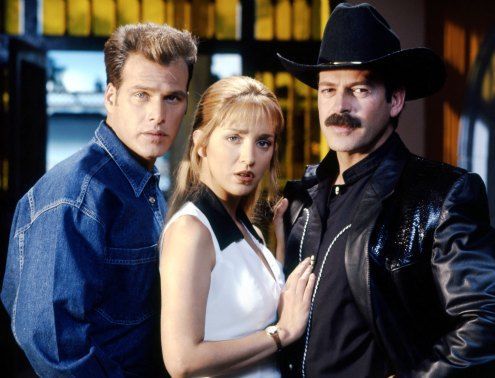

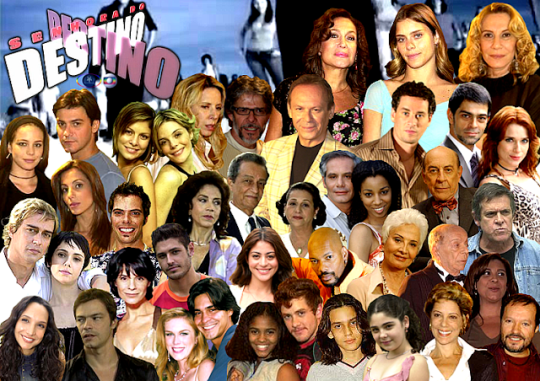
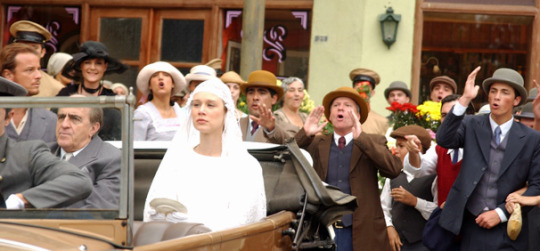
Caption: Typical cast in Telenovelas from different Latin American countries. Most actors, especially main actors are white of European descent. Light-skinned mixed descendants are the second most prominent in certain countries, in some others even they are few. People of predominate African and Indigenous ancestry are usually secondary characters or extras, often playing negative or non-essential roles.
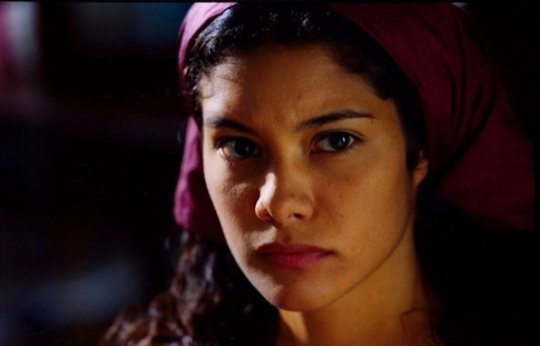

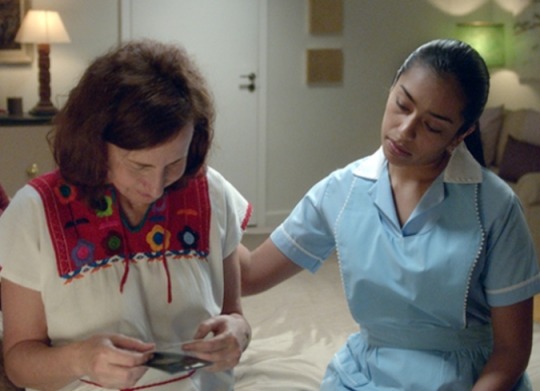
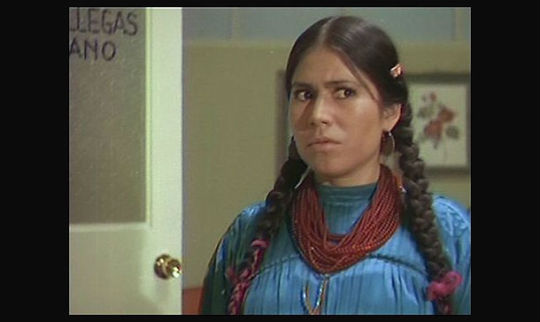


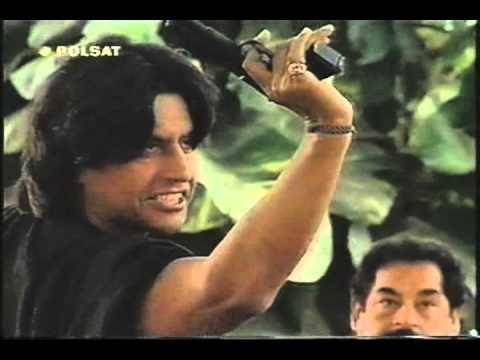

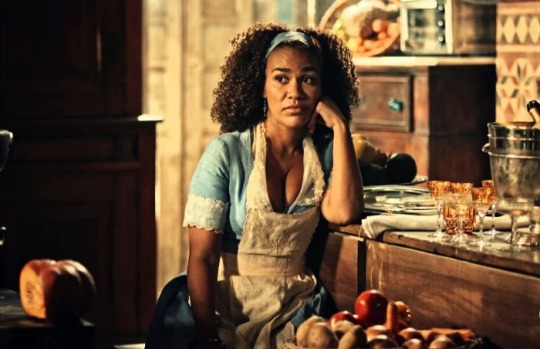
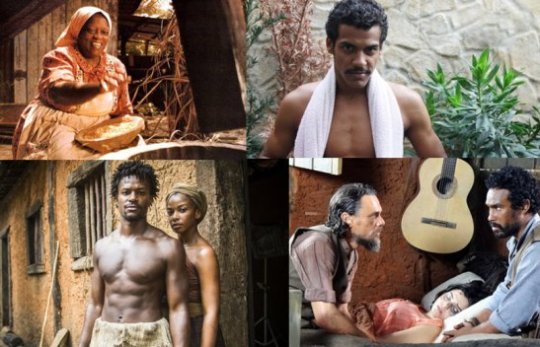

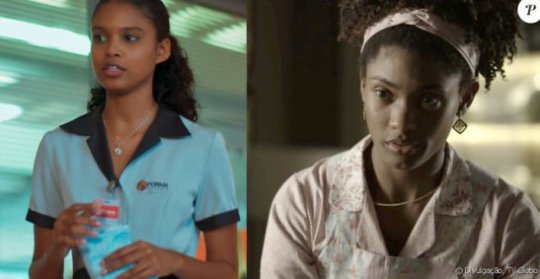
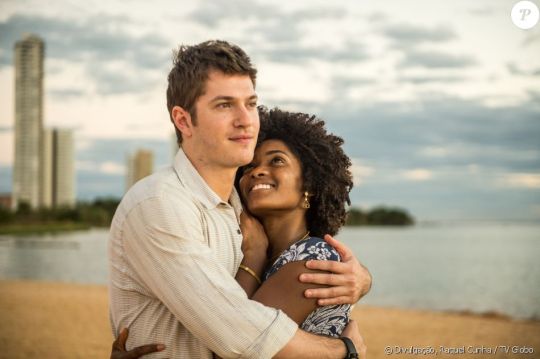

Caption: People of predominate African and Indigenous ancestry typically play maids, criminals, slaves, “non-acculturated” Indian roles (to stress that they’re “unlike us”), and other stereotypical roles. Or the role of the supporting friend to the white character. Black females whenever playing an important role, especially in Brazilian soap operas, are often portrayed as being “saved” from their condition once they find their white prince-charming, a narrative that has its origins in colonial literature.
Sometimes even stories focusing on slavery or colonization have non-Indigenous/Black actors playing them.



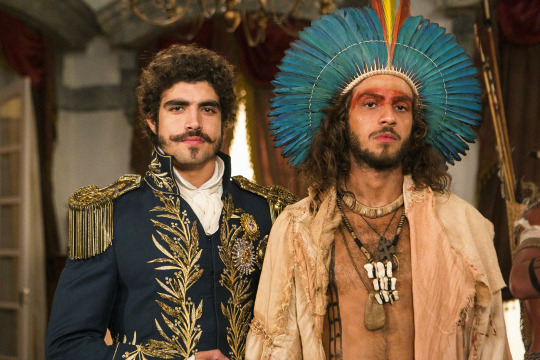

Caption: The first telenovela “White Slave” was about trans-atlantic slavery in Colombia, but the whole show was focused on a rich white girl who was sold into slavery and raised by formerly enslaved Africans who escaped to Maroon settlements. The rest of the examples are of white or light skinned-mixed-race people playing black and Indigenous characters.
Fashion
It’s not a surprise that Canada is cold, especially in the winter time, and because of this Canadians are well prepared for such a climate. The piece of fashion that I have incorporated into my own fashion while living in Canada is that of the toque (Cornell, 2012, Sept. 10). The toque is a national symbol of Canada and most Canadians wear them throughout winter. It is believed that the fashion of wearing a toque in this country started with the Bois-Doi-Couers, fur-trappers, often of Metis descent, who made up the first generation of contact between European and Indigenous people (Wikipedia contributors, 2018, June 6). This is why I think it is a quintessential item in helping me adapt both to the climate and the culture/history of this nation. The toque has had a great impact in my life by keeping me warm from the harshness of Canadian winter.

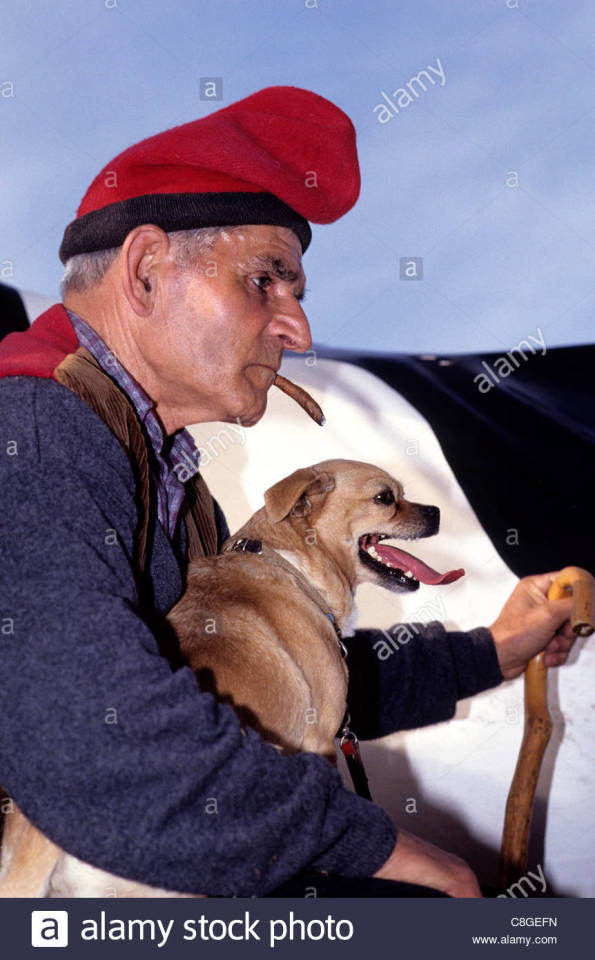
Caption: A Catalan French man wears a type of Phrygian styled hate popular in Southern France and Spain, the influence for the Canadian toque.
�� Food
Food? What can I tell you about my love for food and the various cuisines of the world. The GTA is one of the most multicultural regions of the world and it has one of the most diverse selections of "ethnic" restaurants, spanning from Uyghur all the way to Chifa (Chinese-Peruvian) dining establishments. Wherever I go, I can't stop myself from being influenced by ingredients and dishes from around the world, for example using loads of Angolan piri piri hot sauce in most of my meals. Toronto like my mother's native Sao Paulo share two of the largest Italian diasporas in the world, and because of this I have greatly been influenced by pasta (Veccia, 1984, pg. 4-12). Due to Italian immigration, pasta has become a staple of the cuisine of Sao Paulo, and it has impacted me greatly because it's been one of the main sources of carbohydrates in my daily life (Coughlin, 2013, Sept. 13). Interestingly enough, there are many legends and theories as to how pasta got to Italy, ranging from Marco Polo introducing it in the Middle Ages, towards the more accepted belief of early Nomadic Arabs spreading it into Europe (Avery, 2012, July 26). Which shows how vastly different cultures have been interacting with each other for hundreds to thousands of years via things like trade routes.
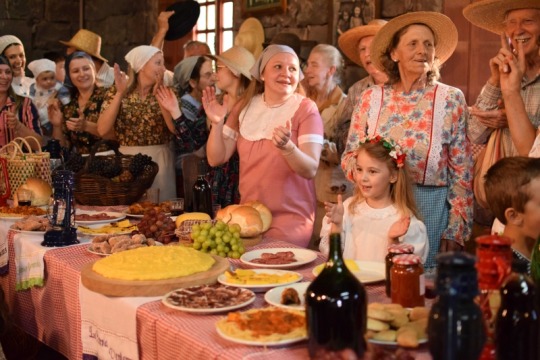
Caption: Brazilians of Italian descent during a folk festival. WIth them are popular dishes brought to Brazil by immigrants from Italy such as pastas, polenta, and cured meats.
Architecture
Studies show that architecture can have both an emotional and psychological impact on us, and I have personally known this to be true (Weller, 2016, Sept. 15). Growing up in Cuba I live on a block where houses were all attached to each other and the road was narrow. Whenever you would walk out of your house the whole street was socializing with each other; people played dominoes, had street parties, and regularly sat around socializing outside as fellow neighbours. This scenario gave me a sense of community, belonging, and a frequent dose of socialization as a child. Then, for some time, I moved to Miami in the United States to live with cousins. They lived in suburbs with wide streets, long back-yards, and houses that were quite a spatial distance from each other. These suburban designs made me feel very isolated and distanced from everyone living around me outside of my family. There wasn't the same feeling of community I felt in the densely populated neighbourhoods in Cuba, where although it could sometimes feel crowded when all the neighbours were out, it always gave me a sense of social belonging and a sense of knowing my neighbour on an intimate level. Later on, living in Canada and working in the construction industry, had once again given me a chance to encounter something that I saw as North American, due to the reason that such suburbs do not exist in my own country. However, this time around it was not the suburbs themselves, but the exurbs; which as we have learned in this unit are the result of greater urban sprawl, and a headache on our environment according to some environmentalists such as David Suzuki. In the exurbs, such as Milton, I discovered something else that had a negative psychological impact on me; tract housing. Although in Canada they're not as bad as some parts of the U.S. or places like China and the UK, they have left a horrid impression on me, due to the fact that most of them look the same and are designed in the same way. It gives a type of robotic, cold, homogenous, collective feel to them. Paradoxal, considering the very non-collective makeup of society in these types of environments (despite how they're portrayed in the media) (Preswitch, 2017, March 16).


Caption: Tract housing. This is depressing.

Caption: Markham, Ontario.
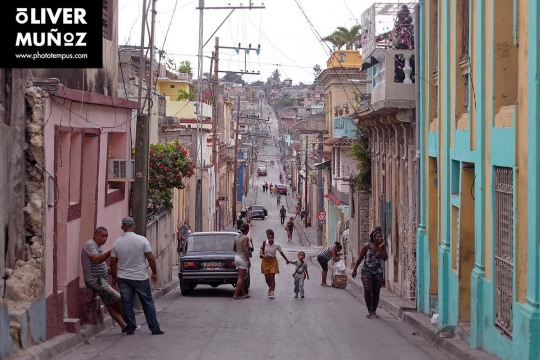
Caption: Most streets both in urban and rural Cuba are close together.


Caption: There are some rural areas with very isolated types of houses, called Bohios, with large plantations or fields for farming. These are usually occupied by descendants of Spaniard/other European peasants who were encouraged to settle in Cuba in rural areas in the 19th century, in order to inhabit areas that were very isolated and were often perfect environments for “Maroon/Palenque” runaway slave) settlements. Most of these farmers and their families have settled in less isolated rural areas where housing is similar to the urban areas or in proper urban areas.
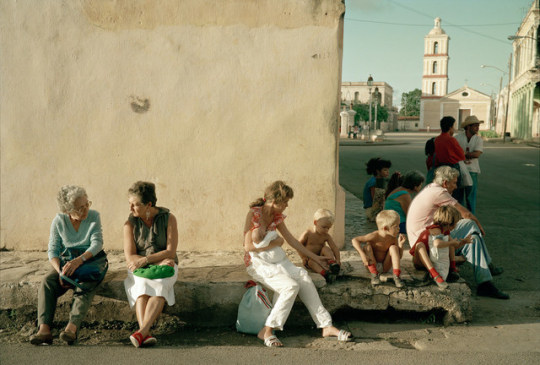

Caption: Most Cubans socialize daily on their neighbourhood street or block. Since until very recently the state owned all property, many people began making businesses from their homes. So often a local business is run on the street or inside the house of a neighbour, thus the person running the business will mostly have clients who are neighbours.


Caption: Cubans hang on their street daily. Often playing card games and dominoes in front of their houses, on the street.

Caption: Community parties and Lukumi (Afro-Cuban deity) and Catholic saint processions occur frequently among neighbours/people on the same block.
Leisure
Leisure activities with origins from around the world are another way you can experience the GTA and Canada as a whole. It's difficult to not to know an urban-dweller that hasn't partook in Japanese Karate, Afro-Brazilian Capoeira, or Hindu Yoga, and I have partaken in various forms of all three activities myself. However, the most influential forms of past-time, would have to be two from my own childhood, both activities have origins in China but have had different impacts on me growing up. Cuba has a large Chinese descended population originating from indentured labourers that were brought to the island at the end of the slave trade (Lopez, 2013, June 10, pg. 50-52). Most Cubans of Chinese ancestry have assimilated into the general population, but many of their cultural traits were infused into the general culture of the nation. Growing up in Cuba, one my best-friends was a Cuban of Chinese ancestry and he and I would often play Mahjong, which is a tile-based game that was developed in China during the Qing dynasty (Lam, 2017, July 28, pg. 11). I've mentioned before Cubans love playing dominoes, and mahjong has many similarities to dominoes. This impacted me because it created a lot of fond memories, and the nostalgia of them hit me every time I play the game in the present. Another example of a Chinese leisure activity that has a lot of popularity in Cuba is that of Tai Chi, which has origins in Taoist philosophy (Wong, 1996, pg. 3). Tai Chi is an activity my grandmother often partakes in, it brings her a lot of joy and opportunity to stay healthy in her elderly age, while being able to socialize with friends and neighbours. It has impacted me because it not only has brough such joy to my grandmother's life, but also helped me bond with her while partaking in it alongside her. In my opinion, it's a great way to get the aging baby-booming population to gather together, work on their bodies, and receive pleasure and the positive psychological benefits which are said to come from partaking in the activity.
youtube
Caption: News segment about Little China in Havana, Cuba.

Caption: Cubans of Chinese descent play mahjong

Caption: Elderly Cubans partaking in Tai Chi
Final Thoughts
In a globalized world and a multicultural region of earth that the Americas are, it's close to impossible not to partake or enjoy of a culture that is different from your own. Often, we don't realize how the socialization process might impact us. How the people and cultures we’re around could shape the way we think and behave, even if its contradictory to our own personal culture. As I have presented above, anyone living in the Americas from Canada, to Cuba, and Brazil could be influenced and impacted by the entertainment, culture, fashion, foods, architecture, and leisure activities of cultures other than their own, in the way I have been. These cultural influences on my life have made me the person that I am today, and have made me appreciate being the global citizen of the world that I am. As the world is changing and people around it open themselves up more to humanity; I hope that people are able to share their cultures more prominently. My only wish is that we go by it in another way. Because like many critics we have read about in this unit, I do unfortunately believe that when culture is globalized it can easily be warped into some type of manufactured, whitewashed, Americanized version of what it originally was. It would be unfortunate if this pattern continued. What is the solution to keep that from happening? I don't think we really have one yet..
References
Avey, Tori. (2012, July 26). Uncover The History of Pasta. Retrieved 7:26 pm., August 28, 2018. From: www.pbs.org/food/
Clarke, Colin. (2018). Mexico and the Caribbean Under Castro's Eyes: A Journal of Decolonization, State Formation and Democratization (22-24). New York City: Springer International Publishing.
Collier, Simon, Thomas Skidmore, Harold Blakemore, eds. (1992). The Cambridge Encyclopedia of Latin America and the Caribbean, 2nd ed (pg. 22-34). New York: Cambridge Univ Press.
Cornell, Kari. (2012, September 10). Knitting Hats & Mittens from Around the World: 34 Heirloom Patterns in a Variety of Styles and Techniques (pg. 5). Minneapolis, USA: Voyageur Press.
Coughlin, Jovina. (2013, September 13). South America’s Little Italies. Retrieved 7:19 pm., August 28, 2018. From: https://jovinacooksitalian.com
Lam, Desmond. (2014). Chopsticks and Gambling (pg. 11). Abingdon, UK: Routledge.
Lopez, Kathleen M. (2013, June 10). Chinese Cubans: A Transnational History (Envisioning Cuba) (pg. 50-52). The University of North Carolina Press.
McAuslan, Fiona. (2010). The Rough Guide to Cuba (pg. pg. 409-413 and 523). London, England: Rough Guides.
Moreno, Carolina. (2017, March 13). This Latina Is Calling Out Telenovelas For Being 'Overtly White'. Retrieved 05:19 pm., August 28, 2018. From: https://www.huffingtonpost.ca/entry/this-latina-is-calling-out-telenovelas
Preswitch, Emma. (2017, March 16). Canada's Seniors Live in Suburbs, And That's A Problem, Says New Report. Retrieved 8:01 pm., August 28, 2018. From: https://www.huffingtonpost.ca/2017/03/16/seniors-canada
Veccia, Theresa R. (1984). Families on the Move: Italian Emigration to Saõ Paulo, 1880-1914 (pg. 4-12). University of Wisconsin--Madison.
Weller, Chris. (2016, Sept. 15). There may be an evolutionary reason suburbia feels so miserable. Retrieved 7:48 pm., August 28, 2018. From: www.businessinsider.com/why-suburbs-are-bad-2016-9
Wikipedia contributors. (2018, June 6). Toque. In Wikipedia, The Free Encyclopedia. Retrieved 01:19, August 29, 2018. From: https://en.wikipedia.org/w/index.php?title=Toque&oldid=844733269
0 notes
Text
Gathering Momentum? Resources in Indigenous Education

In February COPA attended the I-Bear Conference at the Ottawa Catholic School Board to present our resource Joining the Circle to educators. There we met Amy Adams, a secondary school educator, who kindly agreed to answer a few questions about her experience.
COPA: What do you think about the resource? What do you like about it?
Amy Adams:
I think it represents a significant achievement in developing Indigenous education resources in a collaborative manner with Indigenous people. Up to this point there have been (some) such resources (created), but many are from a settler/anthropological perspective. This resource is "peer to peer" and avoids cultural hierarchy.
I also like that in the videos Indigenous peoples are not all lumped into one homogeneous identity - that the diversity of Indigenous cultures is very clearly represented. That the little characters are so quirky and cute is an asset too - many possible entry points for kids of not only different heritages, but also gender identities, cognitive levels, ages, etc.

COPA: How do you envision this resource changing your classroom, or your practice? And how will you incorporate toolkit components into your teaching?
Amy Adams:
It was really great and kind of vindicating to see work like this coming to fruition.
When I was in graduate school at Carleton in Canadian Studies, several of my colleagues included scholars representing various Indigenous heritages. We were all into post-colonial studies, and we often talked about the need for educating entire generations of children to think about settler/Indigenous interactions in a completely different way, in order to rebalance Canadian culture, essentially.
I think that this resource, used effectively, could get some traction under the kind of cultural change we envisioned back in grad school.
If I were in the elementary panel I could (use) the physical kit more; in my own practice in secondary panel I can see using the teacher's resource and possibly the videos on the website.
I can also see using the language tool in the Indigenous Literature course I hope soon to be teaching. The sound of language is evocative, so we could use this tool to get a sense (of the language) and perhaps then find resources (or invite a performer) (in order to) have the experience of (reading) Indigenous literature in an Indigenous language, rather than only in the colonizer's language. We could open up the relationship between languages and the dynamics of colonization using this tool as a starting point.
In terms of curriculum, some of the resources are useful as well (in my secondary school classes) for Student Services applications like anti-bullying groups/activities, etc.
COPA: Has there also been a personal impact on you?
I learned (about) the real history (of Canada) many years ago now, have been keeping up with current issues as best I can, and have made a point of teaching the real history whenever I'm teaching a course whose content touches on Indigenous culture. My primary interest is and remains Indigenous art and artists, but of course art is both social, political and economic as well as aesthetic, so I've kept the bigger picture in view.
What this (the experience of being at I-BEAR and encountering this resource) has done for me personally is to give me a sense of gathering momentum that I can join and help keep moving.
COPA: What did you like most about the presentation?
Amy Adams:
I respond to concrete examples and hands-on elements, so the video samples, having the kits in hand to look at, and the drumming made it engaging for me!
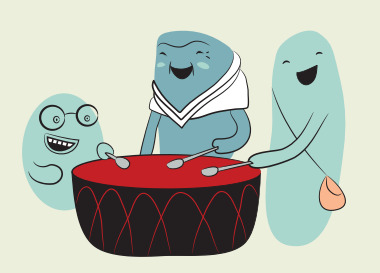
0 notes
Text
The World Belongs to You: On the Sunset of White Supremacy
Hello hello!
On a whim, I found myself working on a short story today. There was a contest for a podcast I love, I Don't Even Own a Television, and I decided to actually take a shot at it.
(On a related note, I know that for those of us on slender budgets, rationing out meds is sometimes required - but take your meds, everyone. It's good for you, and good for your creativity.)
For the story, I found myself thinking about a positive comment or two one of the hosts made about Sun-Ra. As a different friend of mine has been inspired by the seminal poet and musician's work for some time, and has been tracing his effects on Afrofuturist literature, Sun-Ra's been on my mind. That and the ridiculous prompt soon blossomed into a tongue-in-cheek skewering of nostalgia-bait. The story itself featured three Black characters trying to run maintenance checks on habitat craft while asteroid-mining on the belts around Saturn, and ended with Tasia, the main character, happily considering her future in the infinite space around her.
While penning the vignette, I got to thinking about an awkward topic I've been wanting to blog about for a while. As a white person - never a good way to start a sentence, but bear with me - I think about white supremacy and injustice issues a lot. Accepting my place in that system and the place of people who look like me can be thorny.
So - how do those of us who are white emotionally cope with the historical and present burden of accepting that our ancestors and relatives were and still do wreak havoc and enact violence on so many others?
youtube
The Evil Empire
Maybe it's a little silly, but one of the ways I have reconciled with this is by thinking of it in Star Wars terms. Obviously, this fandom is full of toxicity, and it's pretty illustrative in this instance.
Being white, particularly in the post-European cultural mishmash of North America, means being the inheritors of the benefits of colonialism. That stolen land and wealth was given to us. And sure, our lives can be hard in different ways - but in others, in fundamental ways, we have been cushioned.
More so, culturally speaking, white people still dominate in both American and Canadian culture, and in terms of representation. Sure, we're nominally a majority, but if you're reading my blog, you are probably also aware of how disproportionate that representation has favoured us, or at least, people like me (since you, dear reader, may not be white).
But in order to deconstruct that hegemony, those of us who are white have to let go of that heritage.
Imagine, if you will, being born into the Empire in Star Wars and developing Rebel sympathies. Admitting that everything around you is basically wrong can leave one with a heavy heart, but the only way to fix the world and culture is to face and internalize this fact.
The Sunset of the Elves
Here's the thing - it's okay to have mixed feelings about that, and to be like, "wait a minute, is this evil? Has my culture, my country, have my ancestors perpetrated and enabled evil?"
Seeing evil as a verb rather than a state of being, the short answer to that question is "probably, yes."
While that's rough thing to accept and process - nobody wants, truly, to think of themselves as bad - it also means that we have a chance to gracefully fade. I'm editing a project that deals with white supremacists and racists right now, and seeing things from inside that has given me a surprising empathy for them. However, as both the author and myself agree, violence and fear are not the way to protect that legacy.
For one thing, Black people and other people of colour aren't particularly out to destroy all remnants of European cultural heritage, and more specifically, of whiteness. But - those of us born white should do that for them.
It's not that I'm saying we ought to destroy every celebration, or that things like pagan traditions should be forgotten, but we absolutely have to let them become less prominent and make room in culture for the expressions of others. And maybe there's a tiny bit of romance to playing our part in letting the sun go down on evil, and watching others flourish. While the elves are not conventionally evil in Tolkein's Lord of the Rings, the metaphor of transition still works decently, at least for my mindset.
And maybe it's okay for the empire, and us, its children, to recede and fade a little. We've dominated so much for so long - to the detriment of our own compassion and humanity, because that dominance came about through no natural means; only violence and control. (And I reject the proposition that violence and control are a "natural" way to live or some mark of triumph among a species that is, by evolution and fate, as pro-social and inclined to altruism as humans are.)
Shown: just one of the cultural groups I didn't even know about until a couple weeks ago.
youtube
But what do we get in exchange?
Selfishly speaking - as most of this post is - it can be hard to let go of power. But we are still allowed to witness and, when invited, participate in the joy of others.
The problem with whiteness - not merely European-ness, but whiteness, the construct - is that it is inherently restrictive. For those unfamiliar with its precedent, whiteness is an artificial invention devised by slavers to distinguish themselves from enslaved people. Specifically:
"The Virginians legislated a new class of people into existence: the whites. They gave the whites certain rights, and took other rights from blacks. White, as a language of race, appears in Virginia around the 1680s, and seems to first appear in Virginia law in 1691. And thus whiteness, and to a degree as well blackness, was born in the mind of America."
Let that sink in for a moment. Whiteness has erased European cultural heritages, flattened out shared heritage - for after all, if one is to benefit from whiteness, one must supuress and avoid any sharing or serious investment in other cultures, be they Indigenous, Asian, Black, or anything else - and only dabble with them, not engage.
youtube
The fight for equality
Even more perniciously, letting ourselves fear the safety and sanctity of whiteness - an artificial construct, as with racism in general - keeps us divided from other oppressed people and even just our neighbours. If we fear, hate, or deride others, why would we invite them to our table, or show compassion for them, or help them out?
We are stronger together. The world we live in, and the world of the future, will continue to be beautiful and diverse and amazing. And within that word, "diversity", there are more colours and shades and cracks and crevices than we can even understand. Multiculturalism doesn't mean a weird, indistinct melting pot - it means that people with thousands of years of history in their own rights can come together, share, discuss, and create new things. It means that people can live in different places, and come up with new foods, and that nobody ever has to be bored again.
I'm not sure how to express just how beautiful humanity is, or how many different ideas and histories and experiences there are in the world.
It's truly a matter of going from a monochromatic view of the world to full-colour. It's dizzying, and wonderful, and sometimes even painful - but there's so much to share and enjoy. And yes, there are still points of friction, because rejoicing in our shared humanity and differences doesn't mean we can forget the legacy of all this pain and violence - but the future is, and can be, so bright.
As I said to one of my friends this afternoon, "the future belongs to you."
youtube
***
Michelle Browne is a sci fi/fantasy writer. She lives in Lethbridge, AB with her partner-in-crime and their cat. Her days revolve around freelance editing, knitting, jewelry, and nightmares, as well as social justice issues. She is currently working on the next books in her series, other people's manuscripts, and drinking as much tea as humanly possible. Catch up with Michelle's news on the mailing list. Her books are available on Amazon, and she is also active on Medium, Twitter, Instagram, Facebook, Tumblr, and the original blog.
0 notes
Text
Between the World and Me
by Ta-Nehisi Coates
I read this book at the beginning of my last semester of university. It was excellent- I learned and was challenged and felt a lot. Because it is a letter from a father to his son about living as a black man in the United States, there was assumed knowledge or shared experiences that I could not /cannot relate to as a white Canadian woman. It was like listening to a conversation in a language you understand at an intermediate level - I can make out most of it, but some of it goes over my head and I need to study and practice more in order to better understand and I might never be able to understand like a native speaker. While I was in school I didn’t have time to unpack everything in the book that I wanted to. So I kept track of quotes - some that resonated with me and I want to remember and some that I didn’t understand and I want to revisit. Some are paraphrase and others are quoted:
“The crews walked the blocks of their neighbourhood, loud and rude, because it was only through their loud rudeness that they might feel any sense of security and power” (p. 22). Coates says he needed to learn how to navigate and participate in the violence of the culture because it is imperative for security/survival, and survival is needed for escape. This reminded me of Hillbilly Elegy by J.D. Vance in which we describes feelings of powerlessness of hillbillies and impoverished working class whites who feel an inability to control or have their actions impact their life.
“To be forced to live in fear was a great injustice” (p. 28)
“How could schools knowingly send us into the streets then speak of non-violence?” (p. 30-32). The violence of the Black Panthers’ was appealing because it was the same way the country treated them and which created the streets and police injustice. Non-violent protests are esteemed, despite violence being understandable - this esteem promotes ‘good’ non-violent black protests that lack forceful rebellion.
Regarding schools, Coates says to forget good intentions - take responsibility for the abysmal outcomes and realities. (p. 33).
“Had I informed this woman that when she pushed my son she was acting according to a tradition that held black bodies as lesser, her response would likely have been, ‘I am not a racist’... my experience has been that people who believe themselves to be white are obsessed with the politics of personal exoneration... There are no racists in America, or at least none that the people who need to be white know personally.” (p. 97). Oof. Talk about resonating. What are the ways that I continue traditions of bigotry? Am I willing to own up to them?
“The plunder of black life was drilled into this country in its infancy and reinforced across its history, so that plunder has become an heirloom... a default setting to which... we must invariably return” (p. 111). “To yell black-on-black crime is to shoot a man and then shame him for bleeding.” (p.111). These two quotes resonated with me as a fitting description of Canada’s historical and continued relationship with Indigenous peoples.
Being black is not one thing; there is no inherent meaning or nobility to oppression... perhaps other bodies had been mocked and terrorized. (p. 52). “The history of civilization is littered with dead ‘races’ (Frankish, Italian, German, Irish) later abandoned because they no longer serve their purpose - the organization of people beneath, and beyond, the umbrella of rights.” (p. 115). This is one of the big concepts of the book - that race does not exist. I have heard before that race is socially constructed, which makes sense to me to a certain extent. But my mind has trouble accepting it fully, my mind thinks, I have white skin, there is something different between me and someone with dark skin, and that difference is called race. While I still have trouble fully grasping the idea, this book helped me make more sense of it. It is one of the concepts that I have continued to think about and that I will continue to return to.
The dream of American ambition proposed to Coates by society was to grow rich, live in suburbia like families on TV - to be white. As a young boy, he did not know there was anything beyond, outside, or other than the dream. (p. 116-117). One is not black because of a biological race, but bound because suffered under the Weight of the Dream and bound by the shared experiences (of language, literature, food, philosophy, etc.) (p. 119).
Writing on Michael Brown, police brutality, questioning justifying of force: “Should assaulting an officer of the state be a capital offense, rendered without trial, with the officer as judge and executioner?” (p. 130).
“Even when they succeeded, as so many of them did, they were singled out, made examples of , transfigured into parables of diversity. They were symbols and markers, never children or young adults.” (p. 142).
“We have taken the one-drop rules of Dreamers and flipped them. They made us a race. We made ourselves into a people.” (p. 149).
0 notes